All 38 major Google IO announcements ranked
'Okay, Google' give me a Google IO recap – in order of importance

Google IO 2017 recap
Did you miss Google IO 2017? Even though there weren't any high-impact product reveals at Google's annual conference, there were still plenty of interesting announcements.
A lot of these concerned incremental updates to Android, Google Home, Google Assistant, Android TV and Daydream VR.
Oh, and Google wants to help you get a job. There was also that. Here are the 38 major stories (in order of importance) out of Google IO in case you missed it.
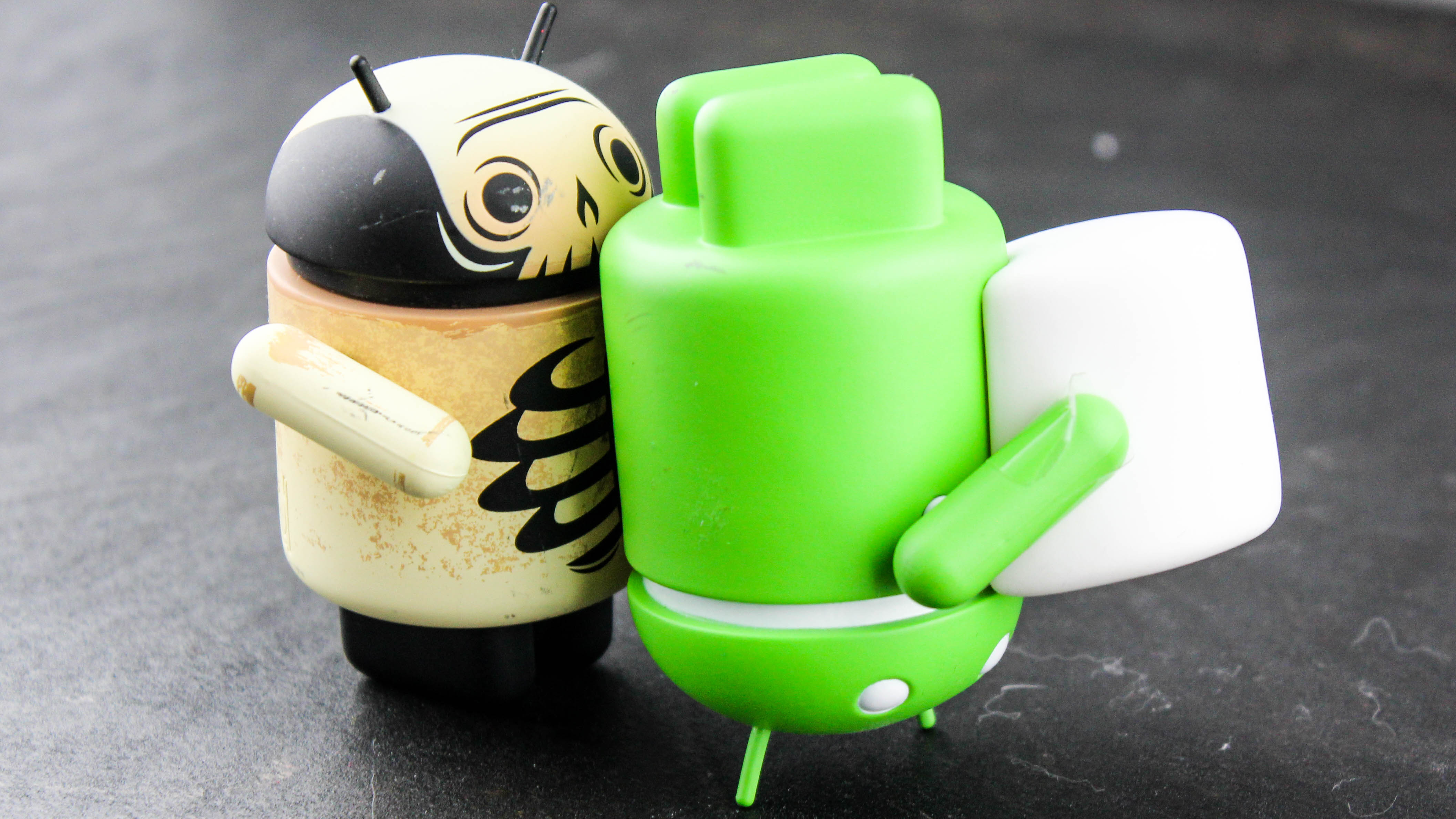
1. Faster Android updates every year
Google is re-architecting Android to make its yearly updates arrive faster for you, and make it easier and less costly for phone manufacturers to update. That’s instantly the best news out of Google IO 2017.
Promising faster Android updates solves the sick joke of Google launching exciting new operating system upgrades... then you waiting for them to trickle down to your specific phone (and carrier).
Google gave its initiative a new name – Project Treble – and says it’s a modular organization of Android that allows phone makers’ customizations to be separate from the Android framework.
This will allow Google to make updates without requiring Samsung, LG, HTC, etc, to rework all sorts of interwoven code. If it works, it’ll solve Android’s biggest flaw.

2. Google Lens is amazing
Google is bringing visual search to your phone, and it’s already blowing our minds. While we’ve seen some of these ideas from Samsung Bixby, Google’s concept holds more promise and better use cases.
- You can identify paintings, buildings and flowers with your phone’s camera
- Auto-recognize the Wi-Fi login details on a router sticker and connect right away
- Overlay reviews and details above storefronts just by holding up your camera
What’s Google’s big advantage over Samsung? Google boasts powerful machine learning and data collection tools. That’s at the core of this technology.
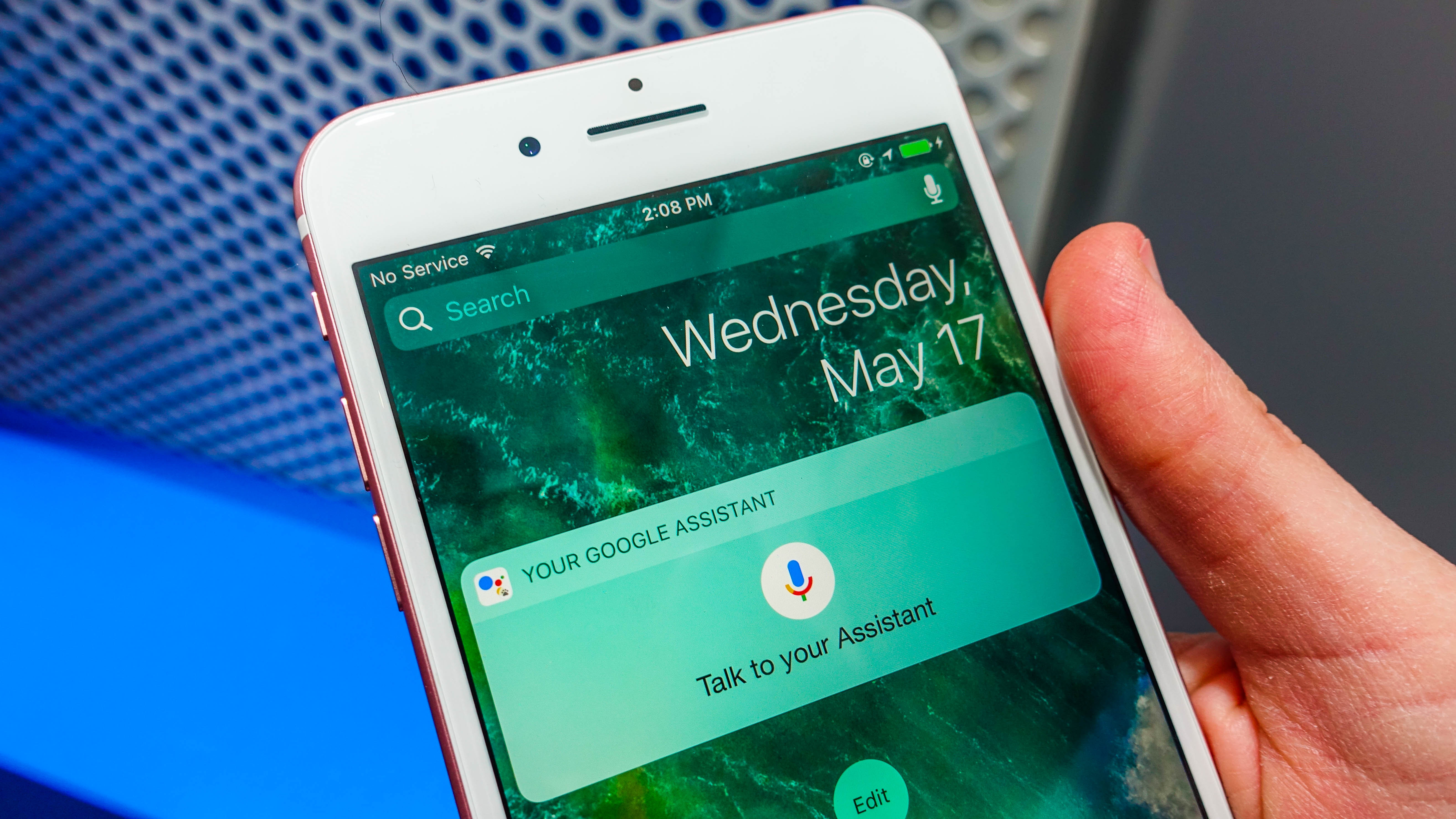
3. Google Assistant on iPhone
Siri isn’t going anywhere in your life if you're on an iPhone, but you may now be tempted to try out Google Assistant if you're on iOS. It’s Google’s slightly smarter AI helper.
What’s great here is the fact that Google Assistant understands the words 'it' and 'that' in a bid to grasp natural language. Siri can do this too, but not to the same degree in our testing.
The secret benefit: Google opening up Assistant to millions of iPhone users means Google Assistant can get even better on Android and other devices, too. Your data is a powerful tool for AI learning.
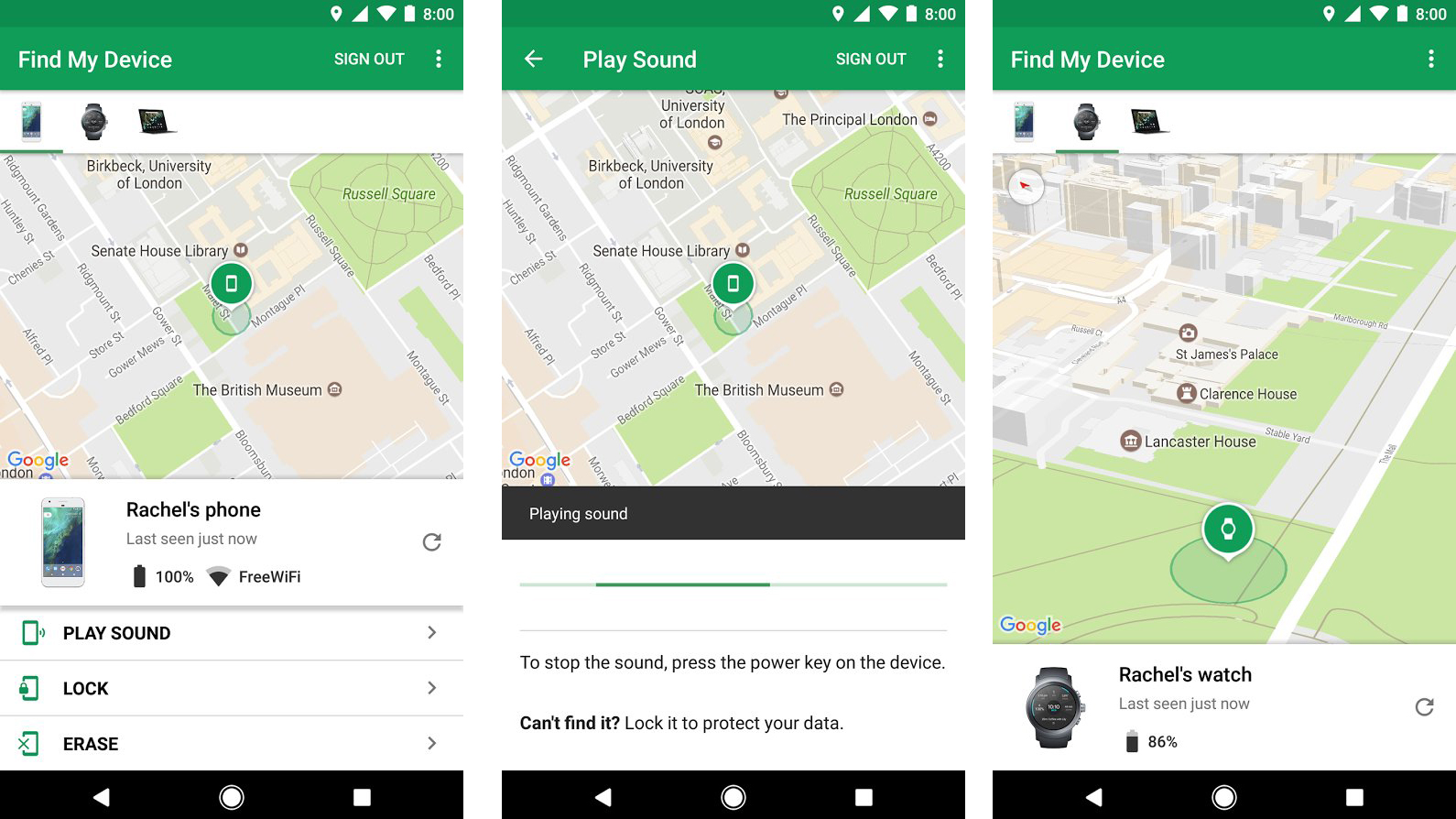
4. Find My Device is way better than Android Device Manager
Google has overhauled its Android Device Manager app so much that its given it a brand new name: Find My Device. And it's more than just a new title – it has fantastic new features, too.
The redesigned app (and website) makes tracking down your lost phone and tablet easier, gives you better Wi-Fi and battery status info, and finally includes Last Known Location.
Last Known Location sends out your device coordinates right before the battery is exhausted, like a digital flare on a map only you can see.
We’ve lost phones before in which the battery died hours prior to us checking Google's previous service and its location vanished from the map, rendering Android Device Manager useless. Good riddance.
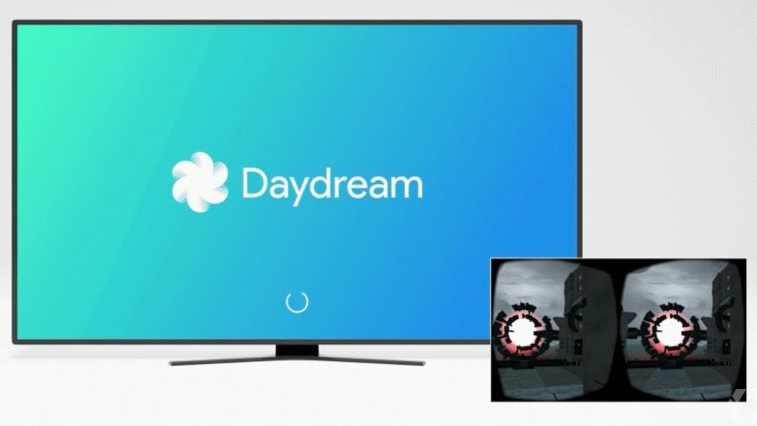
5. Cast your Google Daydream experience to a TV
Google’s Daydream VR platform is undergoing a reality shift in 2017, with new software features and, eventually, new hardware. Daydream 2.0 Euphrates is the name of the new software.
The biggest new feature is that you’re going to be able to wirelessly cast your experience to a Chromecast-enabled television, letting others see what you’re doing. That’s neat.
We like it even more for training purposes. Every time we show a friend or family member VR, they always ask “Okay. What do I do now?” and we have no idea. Ugh. This fixes that big problem of not being able to provide instruction.
Casting your VR experience makes donning the headset feel less isolated, and we’re really happy to see this come to mobile VR platforms.

6. Google Photos: Machine learning or magic?
Google Photos is already impressive, and now it’s going to do what we thought was impossible before: removing distracting objects that stand between you and an awesome photo.
Machine learning is how Google was able to remove a chain-link fence that marred a photo of a child playing Little League baseball. It’s an impressive new height of Google Photos.
Google’s AI capabilities have taken hours of Photoshop toiling and turned them into an automatic process. We’re giddy to see the time-saving results.

7. Android O boot times cut down by half
We don’t often turn off our smartphone, but when it reaches 0% power and shuts off it can be very aggravating to wait for it to boot back up. Same goes for planned restarts.
Google has heard our pleas, and has worked on speeding up boot times with the Android O update. It’s promising that boot times will be twice as fast on the Google Pixel and Pixel XL.
Those phones are already about twice as fast to boot as the Nexus 6, at 47 seconds versus 90 seconds, when running Android 7.0 Nougat – so now we’re hoping for just 23 seconds with Android O.
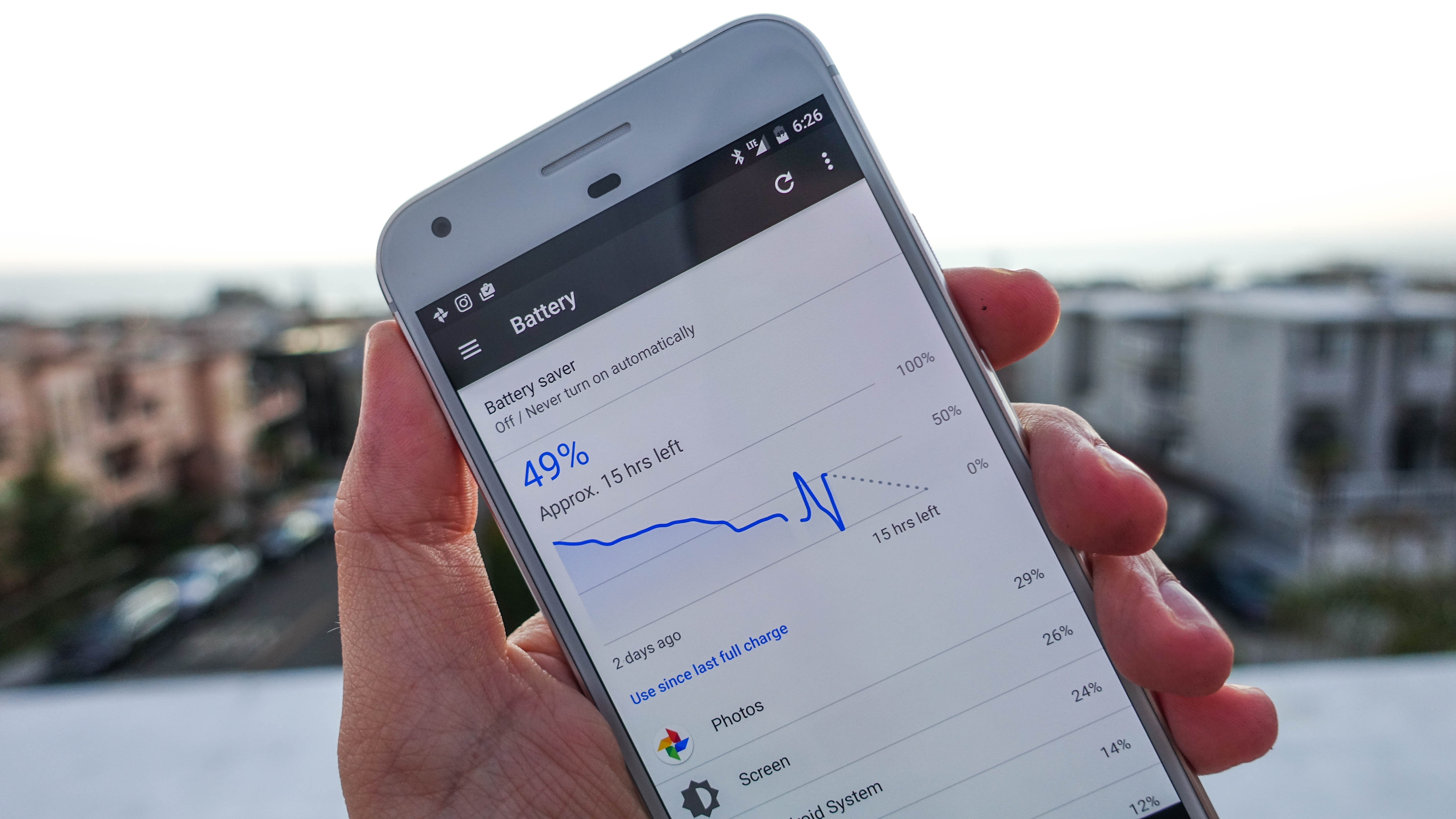
8. Android O battery life improvements
The biggest headache for phone users remains battery life, and Google’s doing its part to help reduce battery drain with new Android O optimizations.
A lot of the battery life tweaks will happen behind the scenes, and allow developers to better limit battery life usage. However, you may also see helpful tips within the battery usage menu.
The Android O battery menu will include not only info on which apps and settings are eating your battery life, but how long you’ve actually used the app. If you’re using Snapseed for five minutes, but it’s taken 13% of your battery, that’s a problem.
This is all part of Google’s stretch goal of achieving multi-day battery life with behind-the-scenes background limits and helpful battery life suggestions for the end-user.
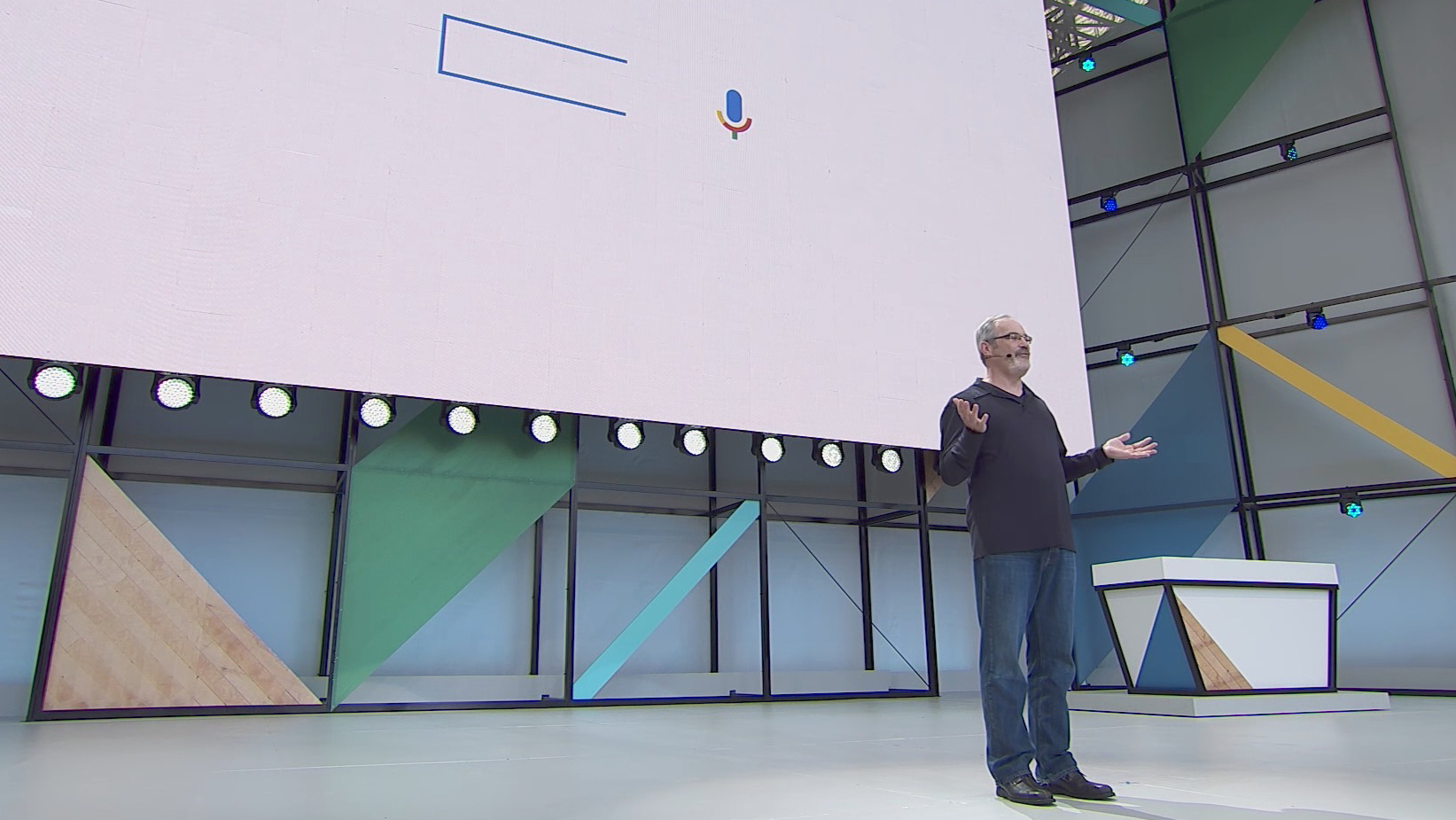
9. Type to Google Assistant is noisy situations
Google Assistant is meant to be conversational, but we’re not always in the mood to talk to a bot on our Android phone – or, now, Google Assistant on iPhone.
Thankfully, Google is now providing a way to type requests to Google Assistant on your phone, ideal for noisy environments in which calling upon a voice assistant is impossible.
Soon, Google will also provide your Assistant conversion history so you can quickly bring up old answers, and Google Lens will become integrated into Google Assistant.
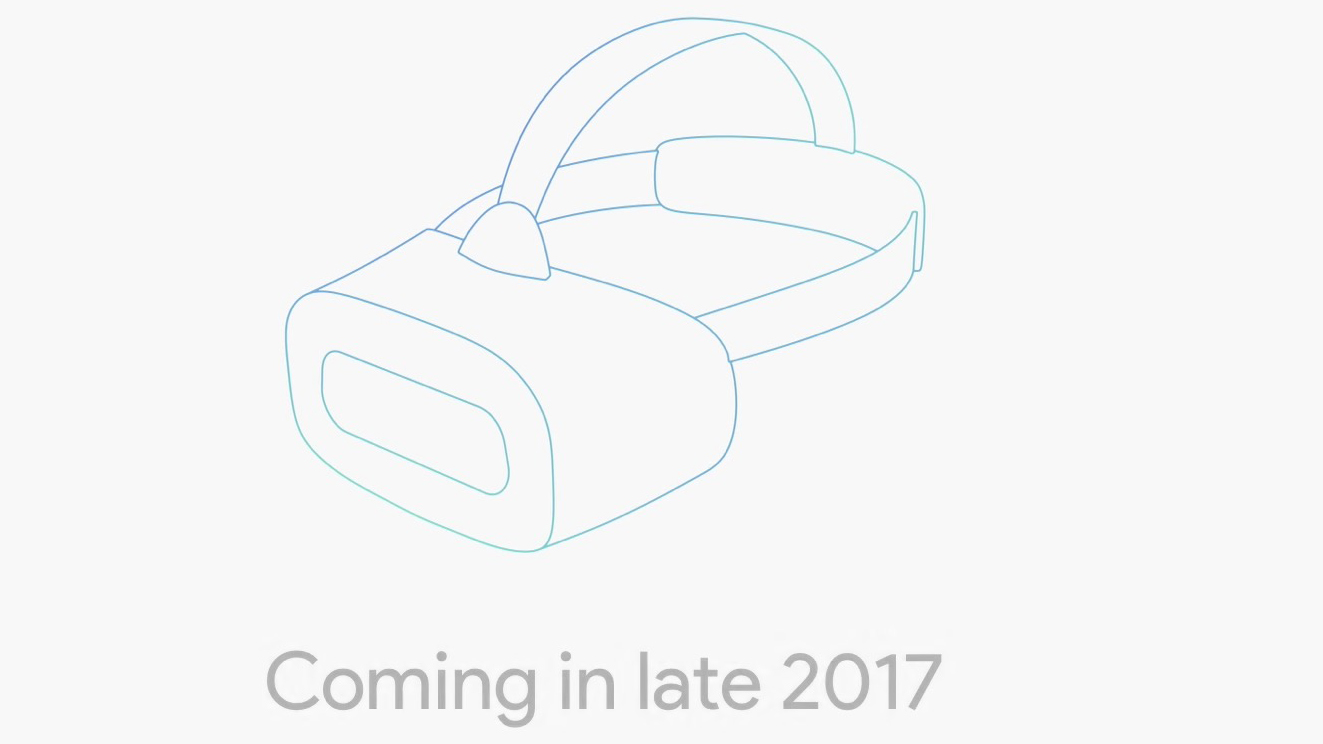
10. Google Daydream phone-free headsets
You don’t have to have a high-end phone in order to dive into Google Daydream VR. You’ll be able to go phone-free and wire-free with headsets from HTC, Lenovo and Qualcomm.
Why go phone-free with Google Daydream? Because these new headsets will be able to track your position (just like HTC Vive and Oculus Rift), but its sensors will be inside the headset. Google calls it ‘WorldSense’.
That means Google is bridging the gap between mobile VR and high-end tethered VR with an all-in-one solution. You can go mobile, but still get position tracking within a room. That’s exciting.
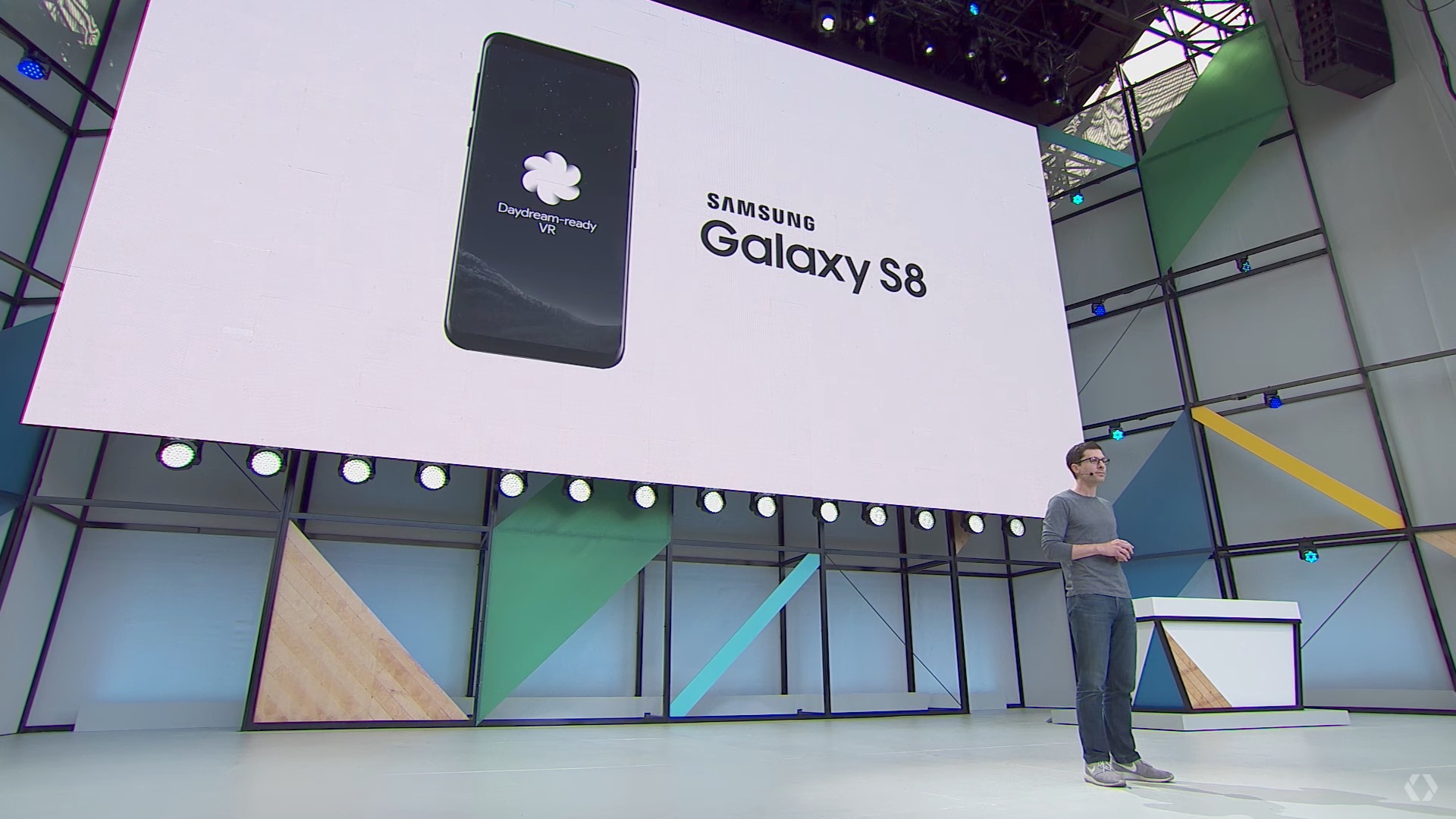
11. Google Daydream for Samsung Galaxy S8 and future LG phones
Google Daydream has been limited to certain Android partner phones, including the Moto Z and ZTE Axon 7, in addition to the Google Pixel and Google Pixel XL. Not exactly a big list.
Daydream compatibility is going to grow exponentially in 2017 with the addition of the Samsung Galaxy S8, Galaxy S8 Plus and future LG phones.
Google and Samsung have what we’d classify as a frenemy relationship, and coming together to move the needle on the budding VR space is key to its success.
Google is also working on bringing Daydreams support to phones running the ARM Mali G71 graphics chip, meaning the Huawei Mate 9 and Huawei P10 could be in the lineup, too.
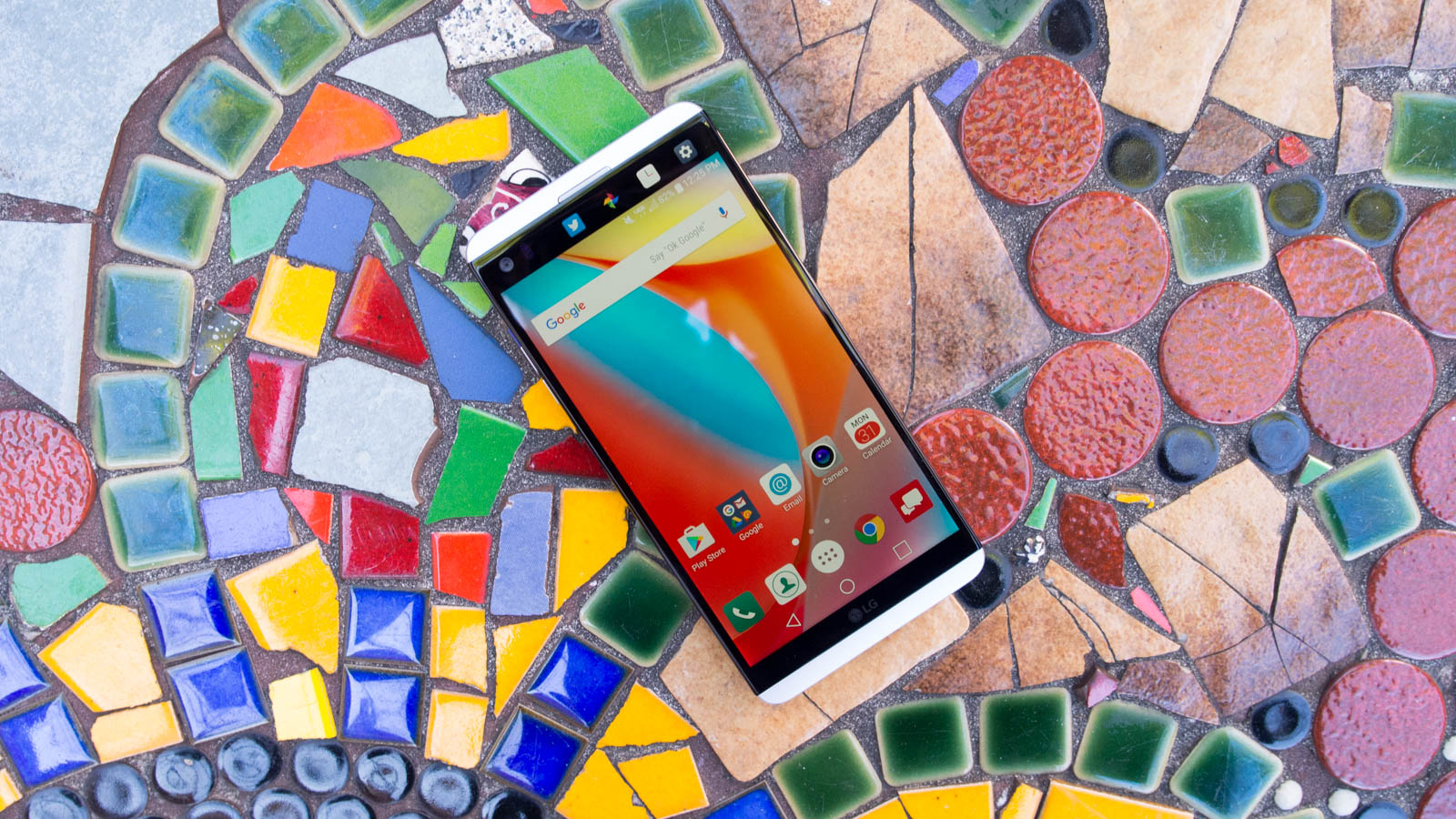
12. LG V30, is that you?
Google didn’t announce the LG V30, but it did throw us a giant hint about what we could see in LG’s next really big smartphone: an AMOLED display.
With future LG phones slated to support Google Daydream, there’s a good chance that LG will switch to a more VR-friendly AMOLED screen over its current LCD panels.
LG’s V series is often an experimental smartphone, previously debuting wide selfies cameras and a second front screen in the past. Fingers crossed we’ll see this one take on VR in September.
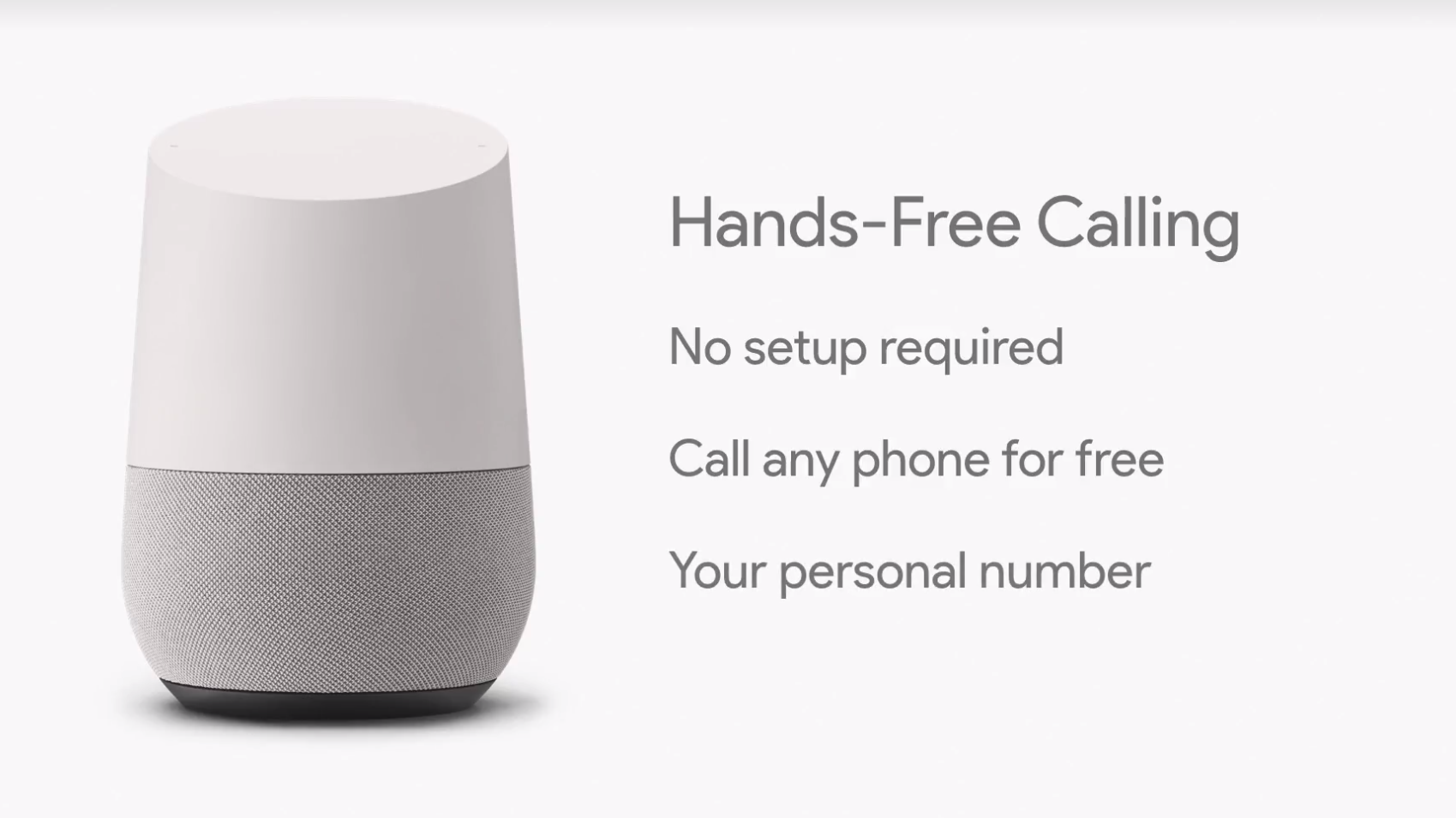
13. Google Home has hands-free calls
Let Google Assistant patch you through to you call via Google Home. That’s the best feature we saw from the Google Home update at Google IO.
You’ll soon be able to make hands-free calls in the US and Canada at no cost, and Google promises that there’s no setup or additional apps to download. It uses your normal number.
Better yet, Google Assistant is supposed to be able to distinguish between your ‘call mom’ and that of anyone else in your household, including a partner or roommate.
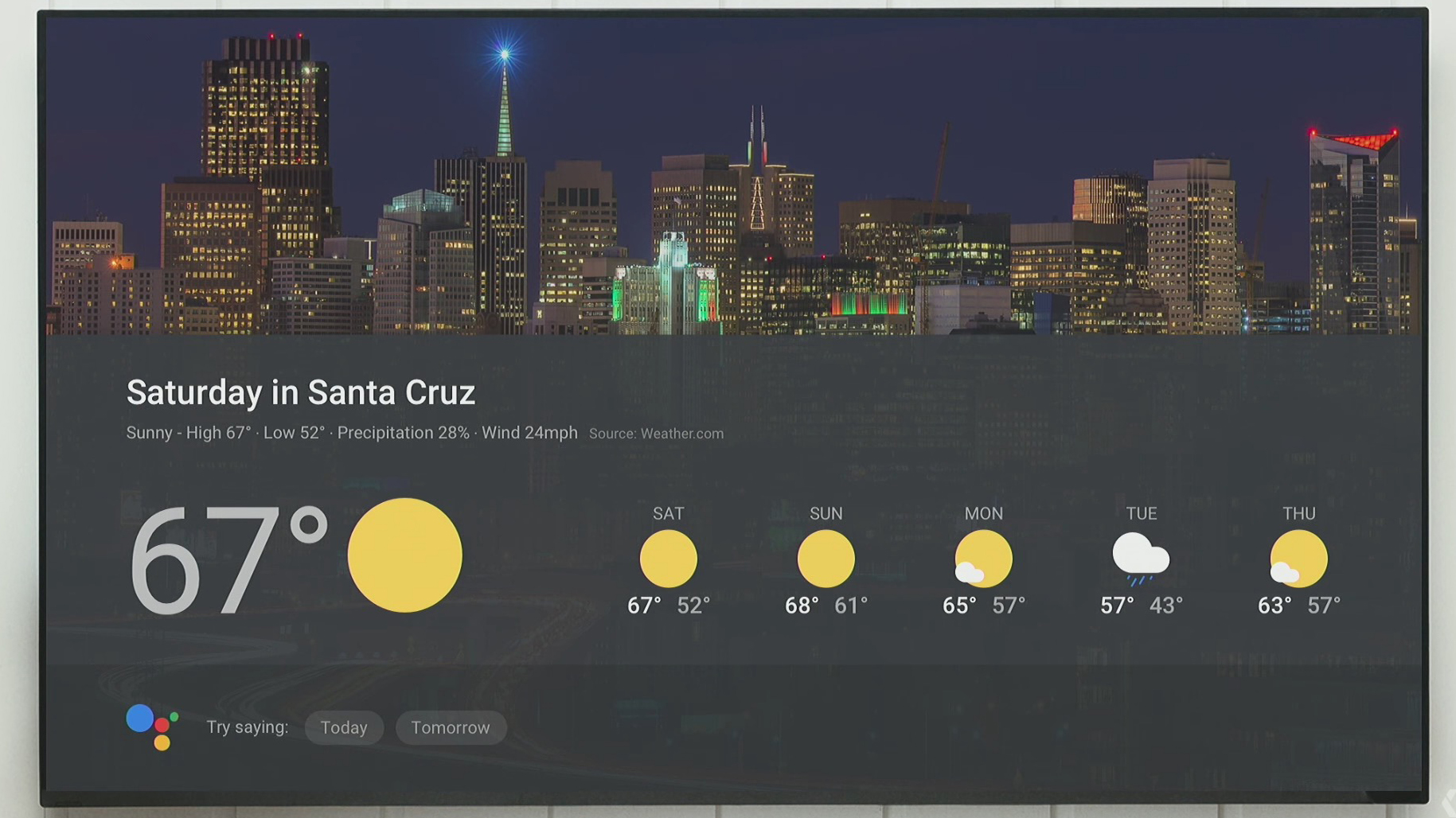
14. Google Home gets Visual Responses
Google made that point that we already have a ton of screens in our home for giving Google Home visual responses. In other words, why would you need an Amazon Echo Show screen.
Google Home will be able to flash map directions, calendar appointments, weather, and personalized YouTube results on a television or phone – whatever works best for you.
Using existing big TVs and always-on-us phones for visual responses is better than looking at a small Amazon Echo Show screen that may be place out of the way (where we used to have our Amazon Echo).
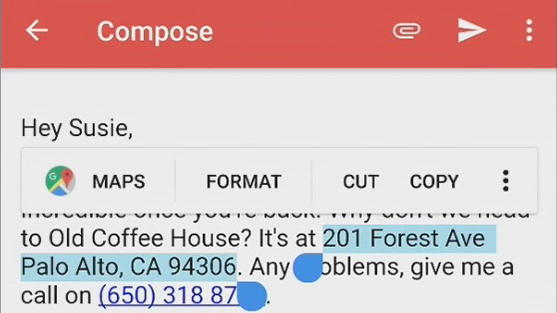
15. Android O upgrades you to Smart Text Selection
Ever try to highlight an address from a message to copy and paste it, but you either get too much extraneous text in the highlight or are missing parts of the address? Annoying, right?
Android O is out to solve this first-world problem with what Google calls Smart Text Selection. Google will automatically know to pick up phone numbers, addresses and email addresses. That’s going to save you a bit some time during critical moments.
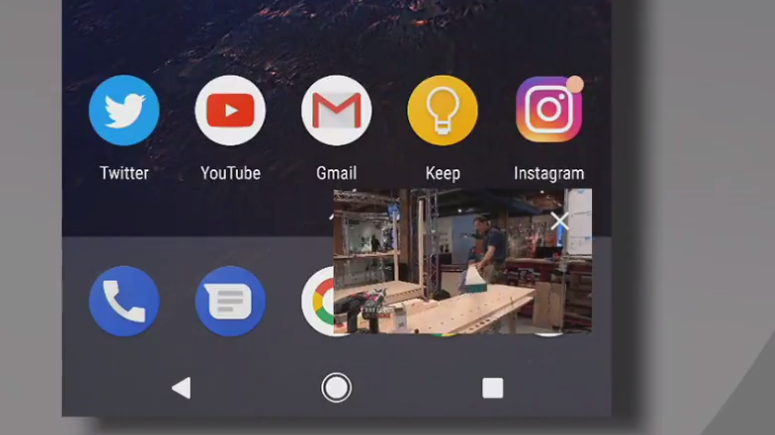
16. Android O does Picture-In-Picture
You’ll no longer have to be beholden to Google’s YouTube or Duo apps while watching videos or making video calls. You can exit these apps and see the video in the corner.
Picture-in-picture is coming to Android O, letting you stay connected to what you’re watching. It’s a trick that the YouTube app has learned within its menus. iOS also has this feature.
Now it’s coming to Android O system-wide, so you can continue to work on your phone and play YouTube videos without compromise.
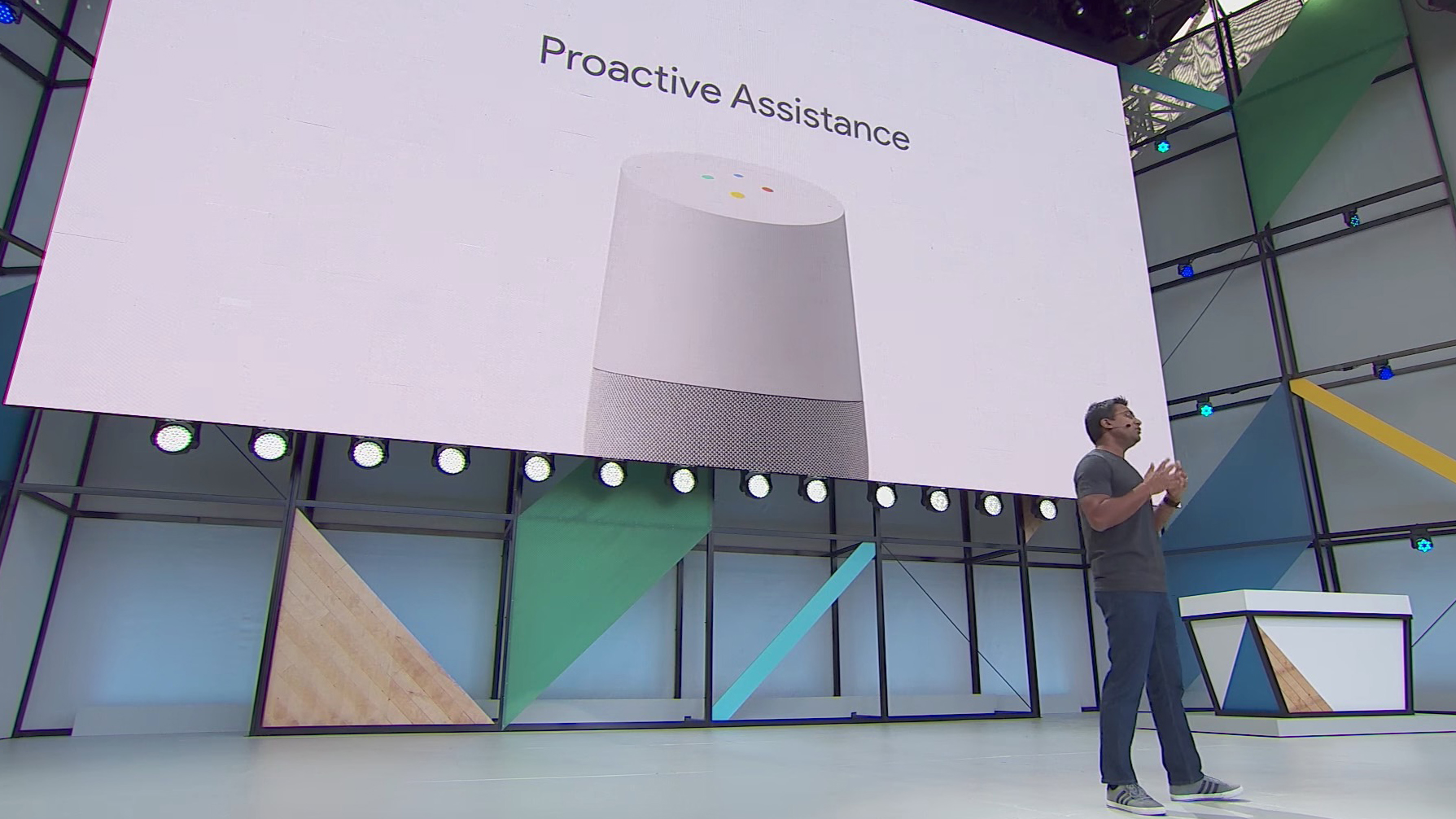
18. Google Home gets Spotify free and Bluetooth speaker capabilities
Google wants to understand the context of your daily life, and it’s using Home to proactively remind you of critical events, not just answer your questions.
It’ll alert you of reminders, traffic delays and flight status changes in the latest update. You’re no longer going to have to be the one to start the conversation every time.
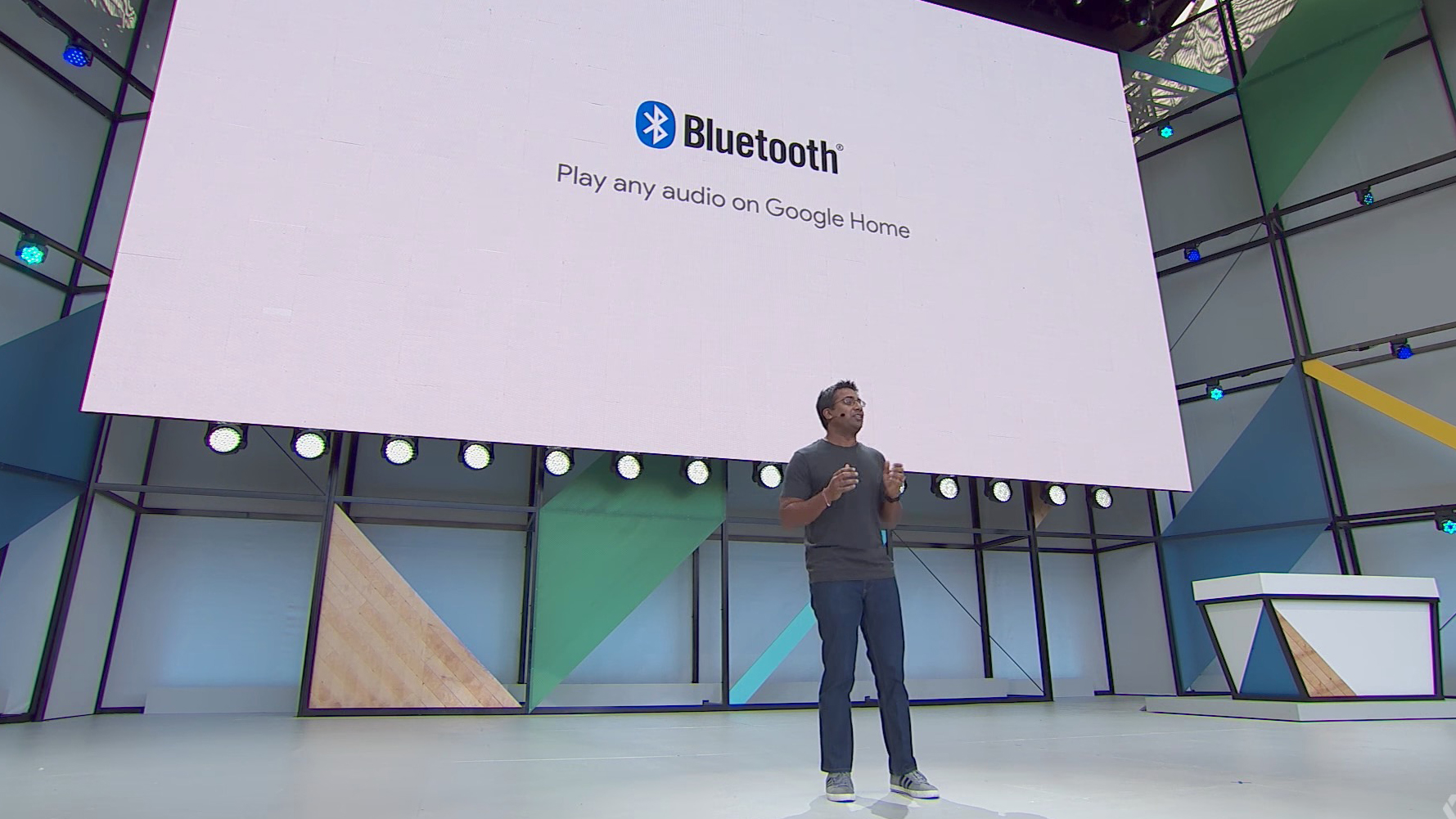
19. Google Home gets Spotify free and Bluetooth speaker capabilities
Google Home wants to become your speaker of choice, and it’s doing that in two ways. First, it’s adding Spotify free to the speaker as well as SoundCloud and Deezer.
Second, all existing you can play music from any Android and iOS source through the Google Home speaker through Bluetooth. Yes, you couldn’t do that before. Shocking.

19. Android Go for low-end phones is opening doors
Google is further proving that Android is for everyone with its new Android Go variation of the popular mobile operating system. It’s a new version optimized for low-end phones.
It’s designed to bring Android O features to phones with 512MB to 1GB of RAM, like the Moto C or the rumored Huawei Y3. Sometimes these phones avoid the latest updates.
Android Go will use less storage space, processing power and mobile data, both for its core apps and lighter versions of your favorite third-party apps. There’s also a new way to show how much data you’ve used.
This is a big play for Google and its plans rout Apple and other phone makers converging on the affordable phone market in India.
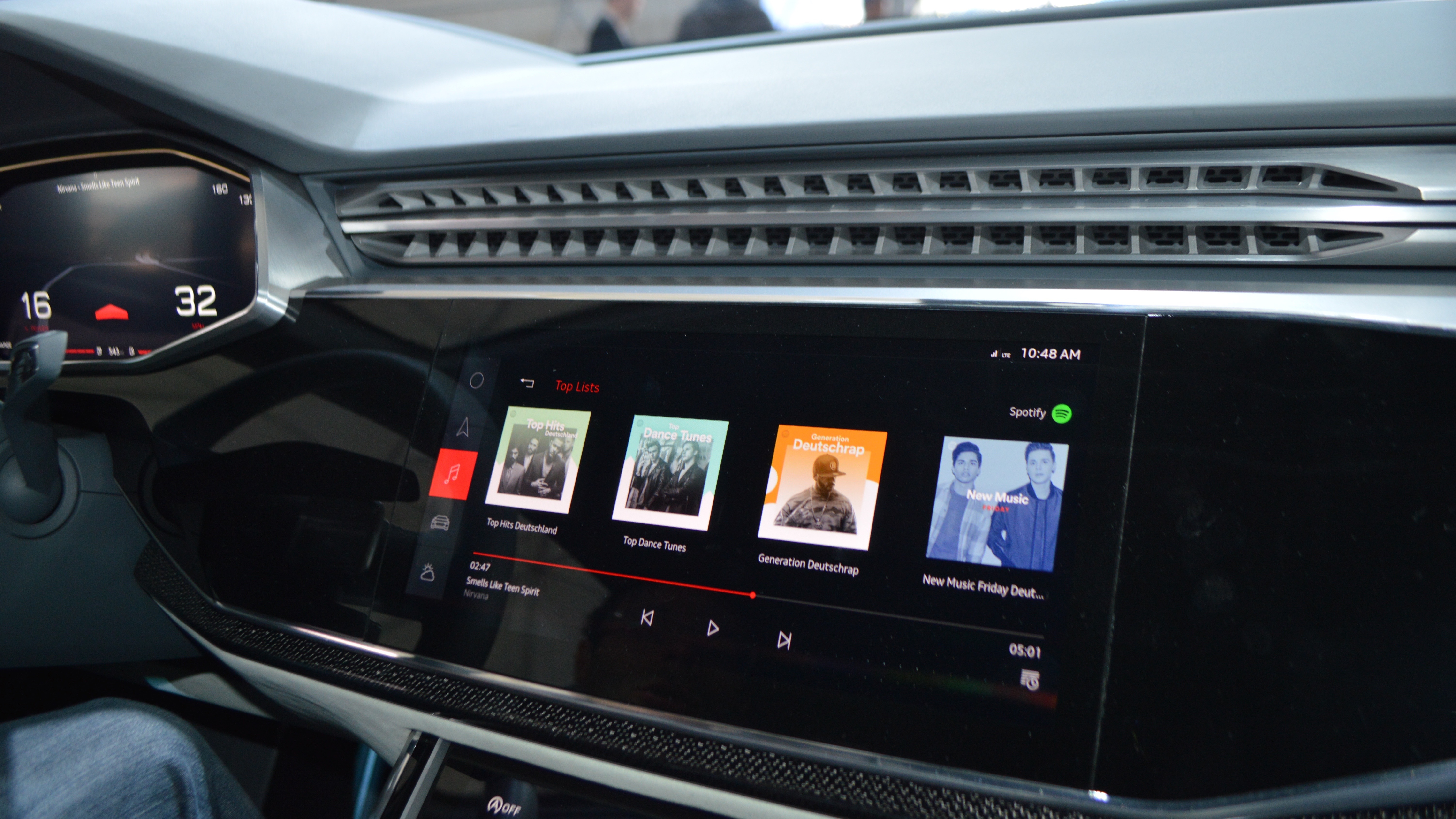
20. Android in the car is better than Android Auto
It’s been three years since Android Auto was announced, and this year’s Google IO demoed an all-new grown up version of the operating system in cars.
Volvo and Audi were both teasing vehicles running full Android inside the dash without the need for your phone to be tethered, as was the case with Android Auto.
The screen is, instead, powered by a computing in the car that’s running Android. The best part is that Google Assistant will be at the heart of this new vehicle-flavored operating system.

21. Asus Zenfone AR is coming this summer
Asus Zenfone AR is the smartphone that’s going to make Google Tango augmented reality an actual reality because it’s a lot better than what we experienced with the Lenovo Phab 2 Pro.
It’s a typical big phone with a 5.7-inch screen and fast Snapdragon 821 chipset, so it’s smaller and more powerful than any previous Tango device.
The new Zenfone AR is also able to run Google Daydream VR, meaning it’s the first phone to combine the best of the virtual reality and augmented reality world we want to live in.
Moreover, in the US, Asus Zenfone VR is coming to Verizon this summer, so it has a chance of actually making an impact on everyday consumers who often buy their phones in stores.
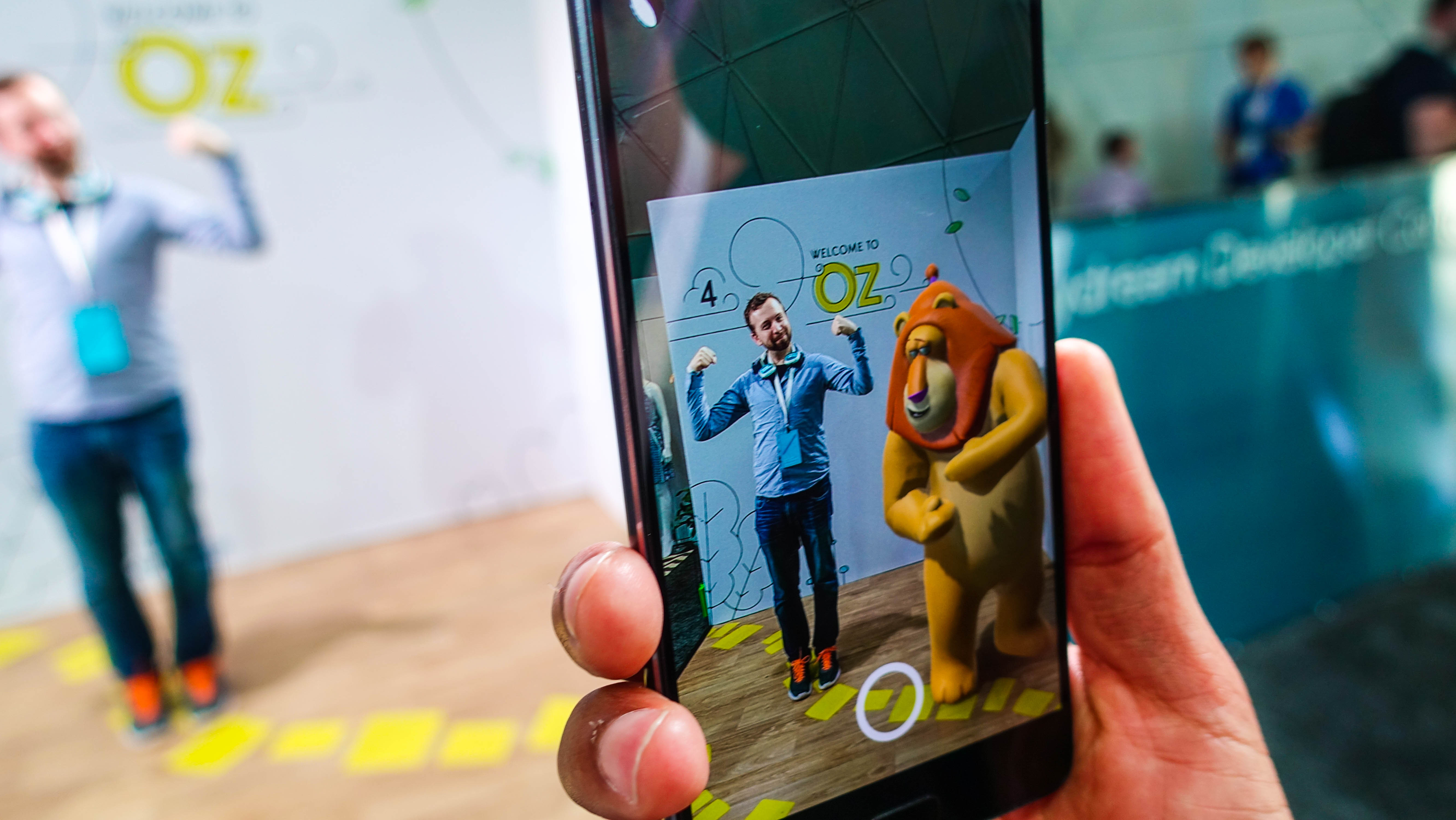
22. New Google Tango demos bring sci-fi AR to your phone
Google IO gave us a chance to check out new Project tango augmented reality demos, and it really gave us better insight into how AR phones are fit into our future.
We became part of a classroom with other ‘students’ peering at the solar system before them. Giant planets appeared before our eyes – at least through the augmented phone screen.
We then watched a Wizard of Oz fairy tale starring the Scarecrow, Tin man and Cowardly Lion (and Toto, too). The animations were fun, and you could put people right into the scene.
It’s the first time we felt like Google Tango was a promising platform – now it just needs more phones to support the futuristic mix-reality technology.
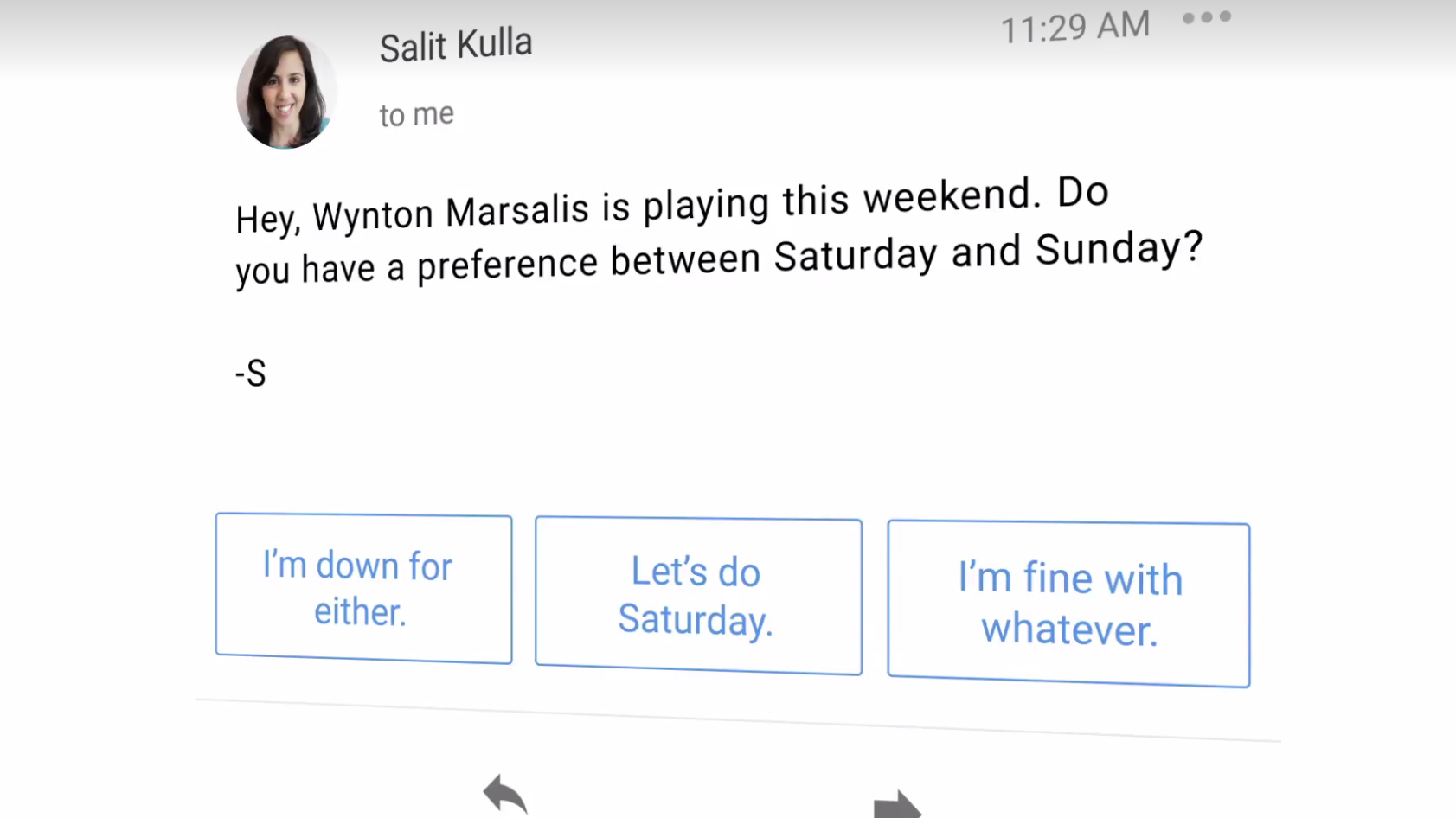
23. Gmail Smart Replies are quick and easy
Your Gmail responses are about to become pithier, but be sent faster thanks to Google’s new smart replies. Previously, these were only available on its Inbox and Allo apps.
It’ll read the context of the email and give you the option of three responses, which can be as granular as ‘Let's do Monday’ and ‘Either day works for me’.
Don’t worry. You can send immediately or edit (probably best) these smart replies after tapping on the one you want. It’ll launch in English on Android and iOS first, then Spanish in the coming weeks with more languages to come.
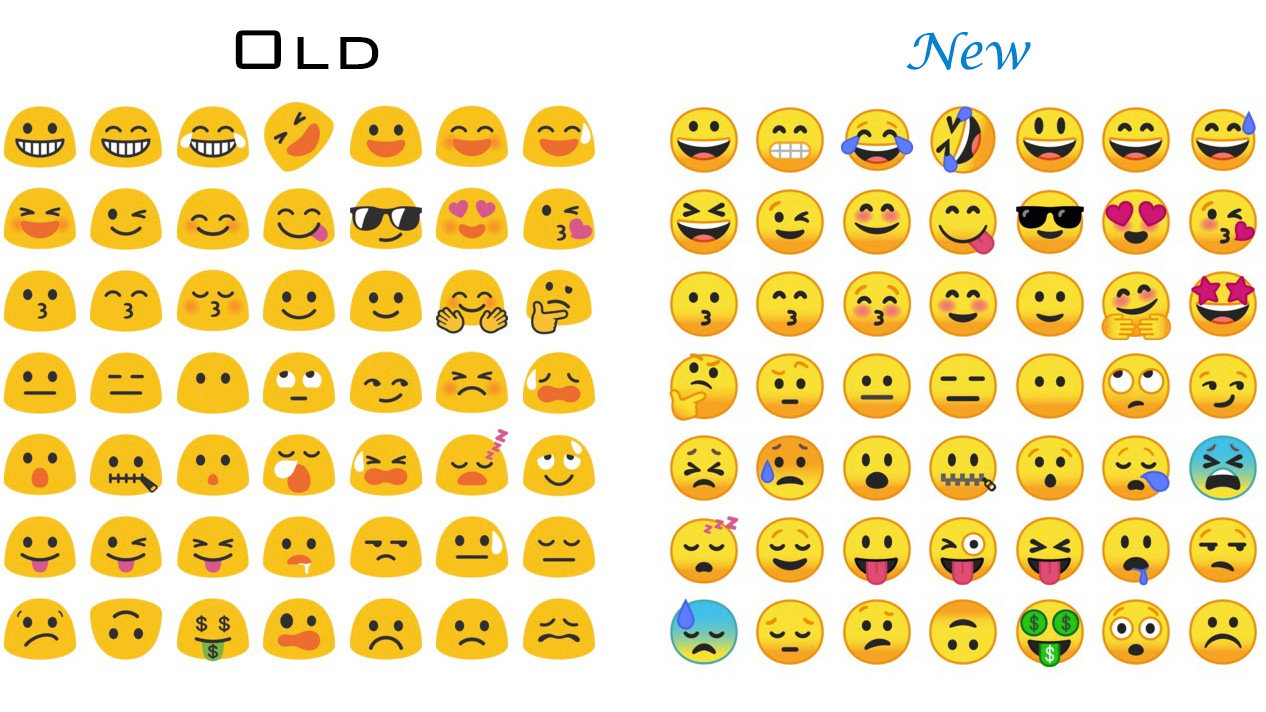
24. Android O gets rid of ugly emojis
Google’s amorphous blob emojis will be no more when you update to Android 8.0 Oreo (at least, that’s what we think the name will be). And it’s about time.
Previous Android emojis looked like unhealthy sloth-like creatures and warped the expressions you wanted to convey when sending and receiving emoji.
They went from saggy to rounded smiley faces at Google IO. Less distinct, sure, but more in line with what other users see on iOS, Facebook, Samsung, etc. are actually seeing.
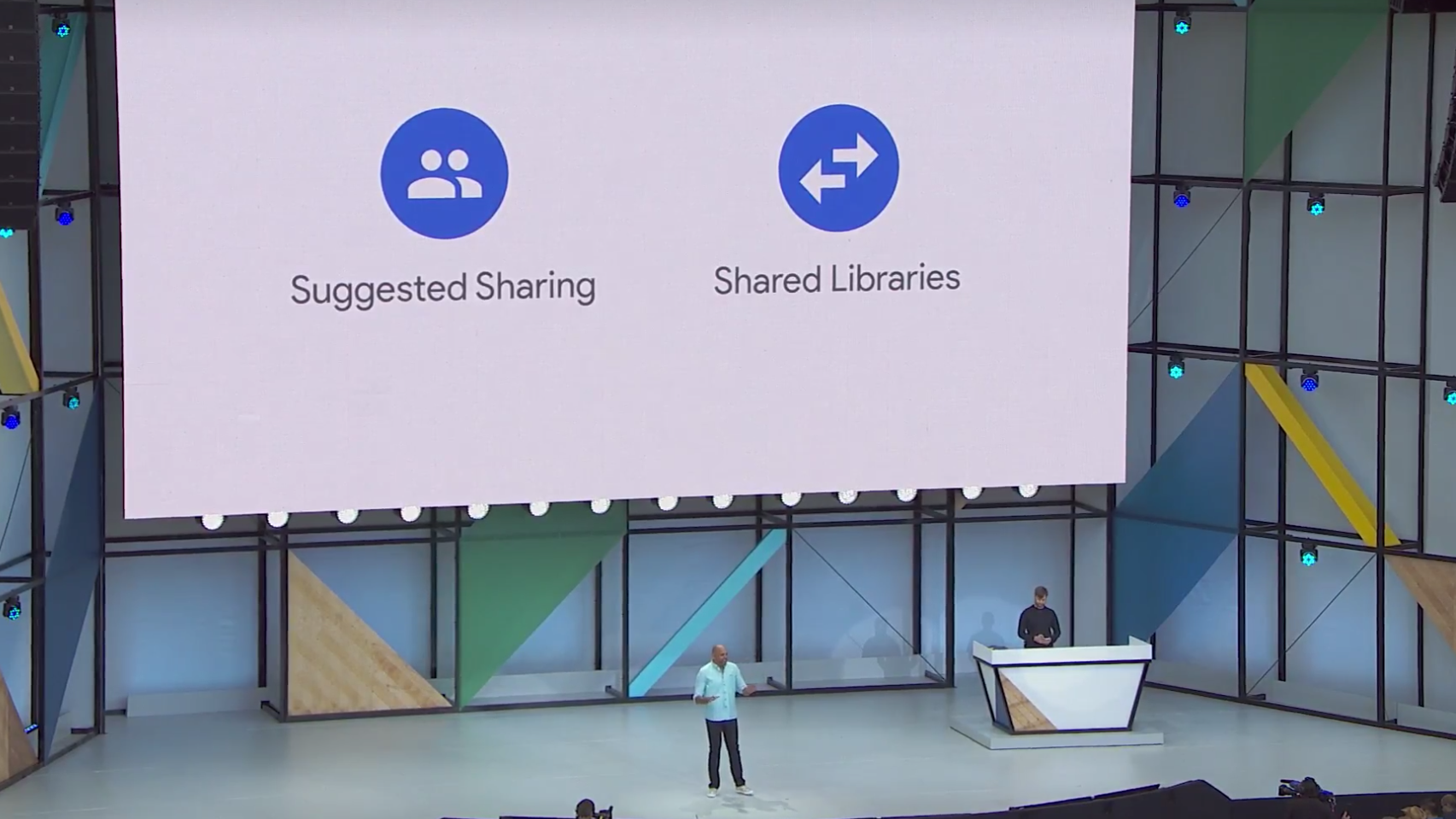
25. Google Photos Suggested Sharing and Shared Libraries
Google’s AI smarts are also changing the way we share photos with friends and family, nudging you to do so – with the right photos they’d want to see.
That’s a key difference between Google Photos and other photo apps with reminder features, namely ones from Facebook. Google wants to surface the right photos for you to share.
It does this in two ways: Suggested Sharing will select photos for specific contacts, while Shared Libraries can automatically send and receive relevant photos between two contacts. The latter is obviously meant for close friends and family.
“Gone are the days of begging your partner for those special pictures only stored on their phone,” according to Google.
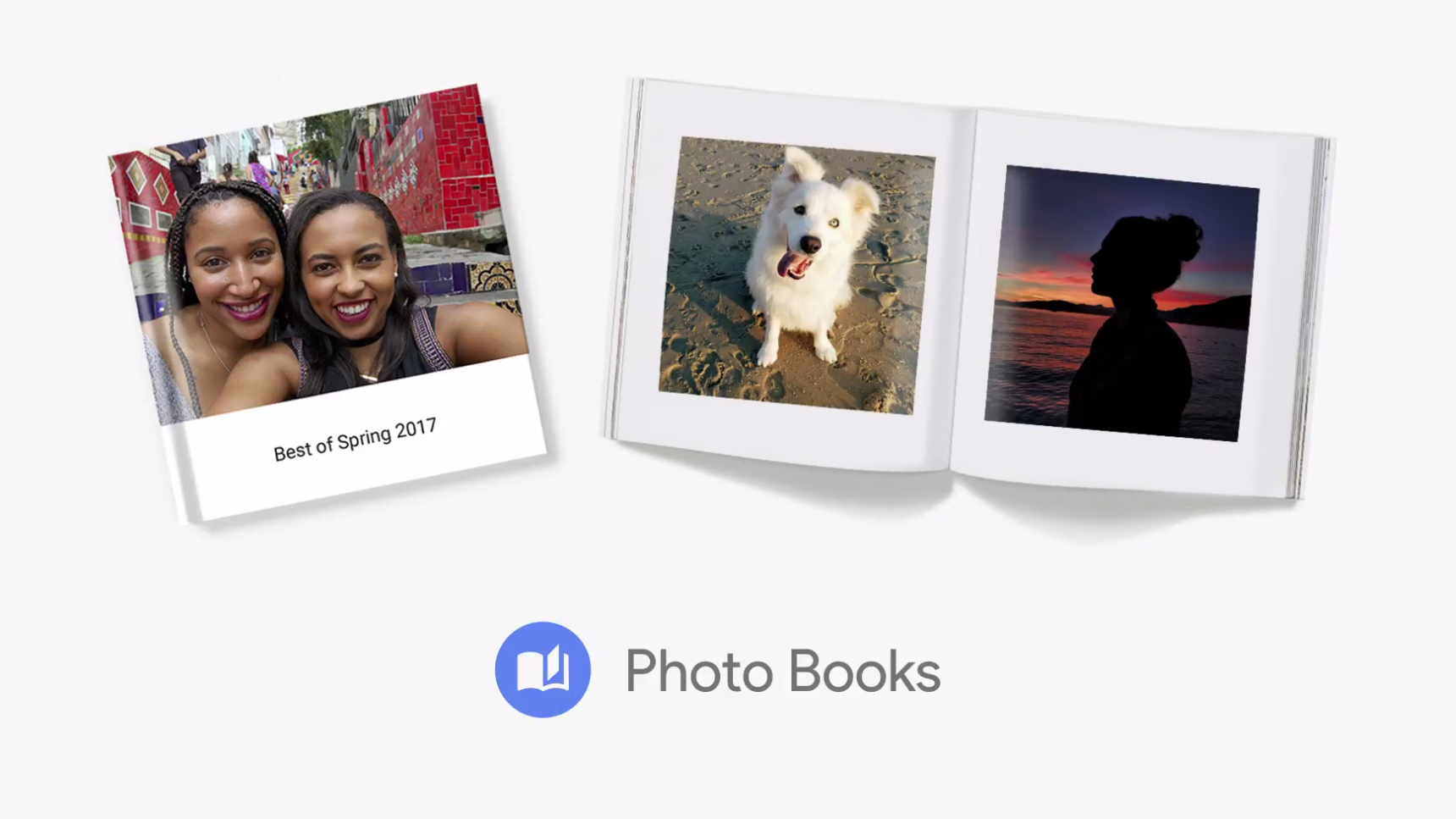
26. Google Photos Book
There’s still room for printed photos in your life, and Google is heading that call with Photo Books. It creates a printed photo album based on your Google Photos collections.
It’s another task that used to take hours to complete and should only take you a few minutes thanks to the combination of Google Photos search and an easy checkout process.
Photo Books are available in the US first via the web now, and Android and iOS next week, starting at $9.99 (about £8, AU$13) for a 20-page softcover book. Hard covers doubles the price.
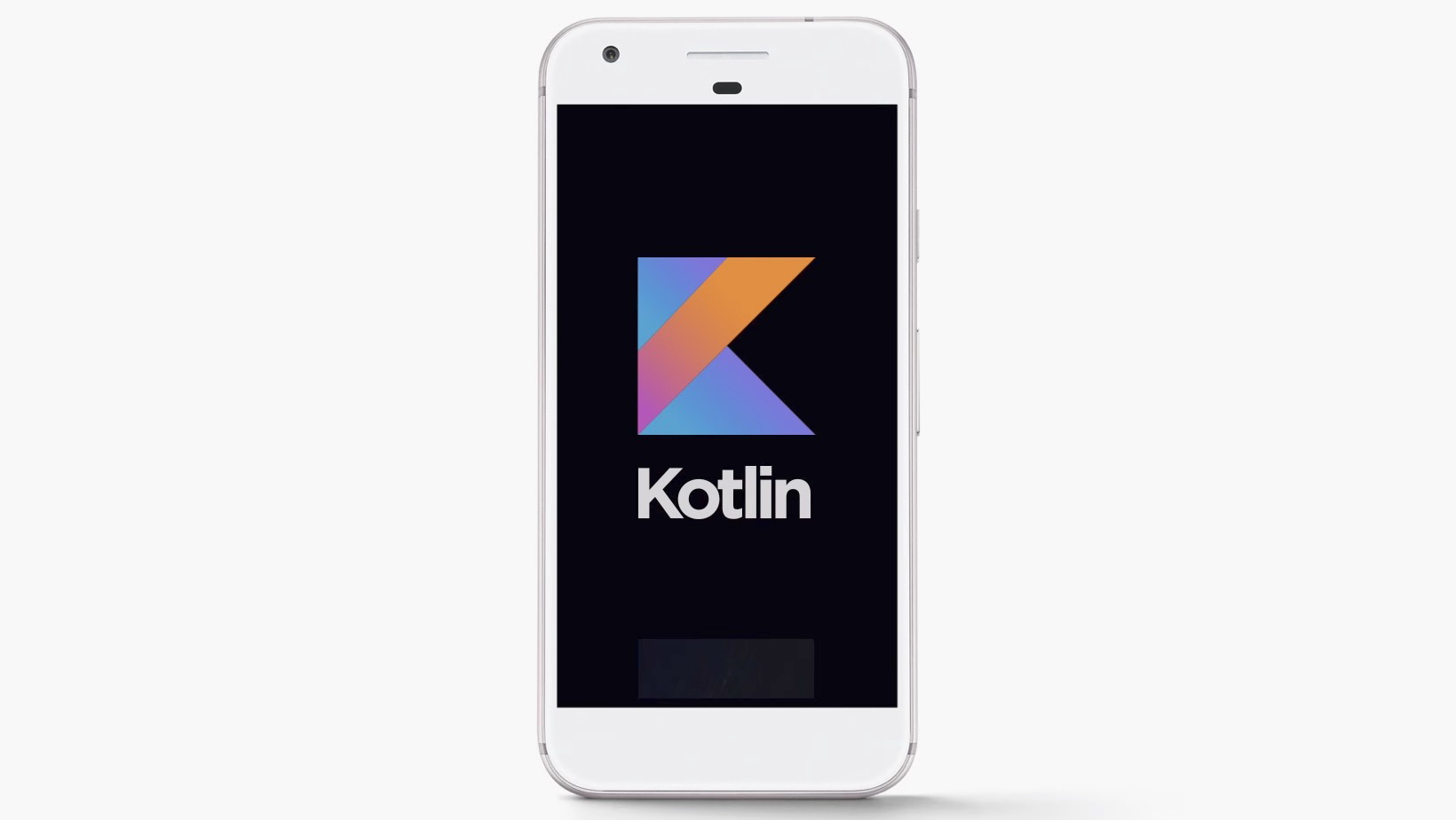
27. Kotlin is going to benefit programmers which helps all of us
Google’s officially embracing Kotlin as an Android programming language, and that’s big new for Android developers who want to move beyond Java.
It got the most applause out of any announcement from developer-filled Google IO crowd, and that’s because it’ll make app development easier. It makes coding easier, while still staying true to Java.
What’s in it for you? You may start seeing Android apps release at the same time as Apple iOS apps because they’re easier to build, and with that, you may get more frequent updates.
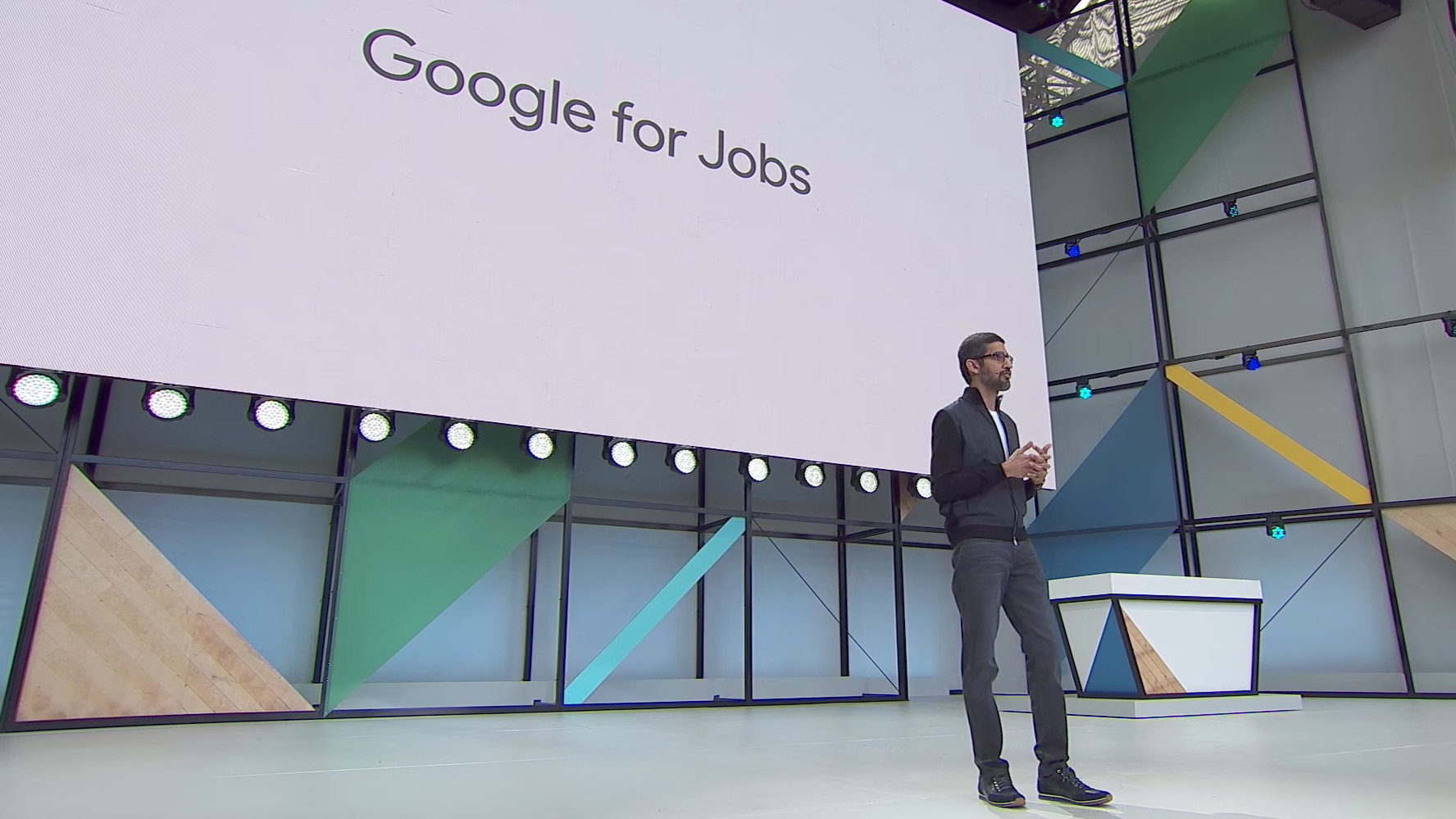
28. Google for Jobs wants to get you the career you really want
Google wants to help the right candidate find the most relevant career, and it’s doing that with a new initiative it calls ‘Google for Jobs’.
It combines Google’s machine learning skills and its search bedrock, connecting job seekers with a filtered list of job titles that fit their needs, down to their commute times.
Employees and employers use many different terms, so Google is also applying machine learning to weed out the needless hassle of errant matches.
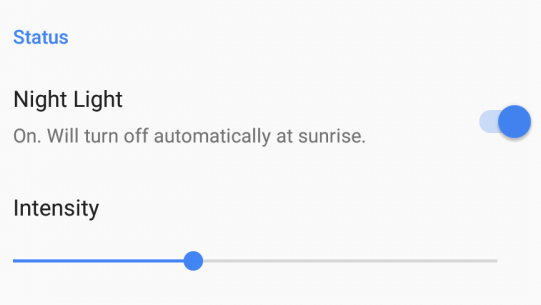
29. Night Light finally gets an intensity slider
Night Light debut in Android Nougat, and it’s a great way to reduce the sleep-depriving blue light shining up at you from screen. Only, it doesn’t work as well as it should.
To fix that in Android O, Google added a much-needed intensity slider because one size doesn’t fit all. Sometimes you don’t want as much blue light, but you still want to see photos or color-coded spreadsheets in their semi-natural color.
Google’s Night Light isn’t as good as Apple’s Night Shade, but it’s on its way to matching what you can experience on the iPhone. It just took a bit longer to get there.

30. Notifications ‘dots’ on your app icons
Stock Android is finally getting notification badges, or what Google calls ‘notifications dots’. It’s a lot like we’ve seen from iOS and Samsung phones over the years.
Now you’ll see a small dot in the top right corner of an app icon, indicating there's an unchecked notification for that specific app. You can then long the app icon to get more information, including the app notification count.
It’s a small, but long overdue change, though we'd still like to see numbers in the actual notification badge... err dot.
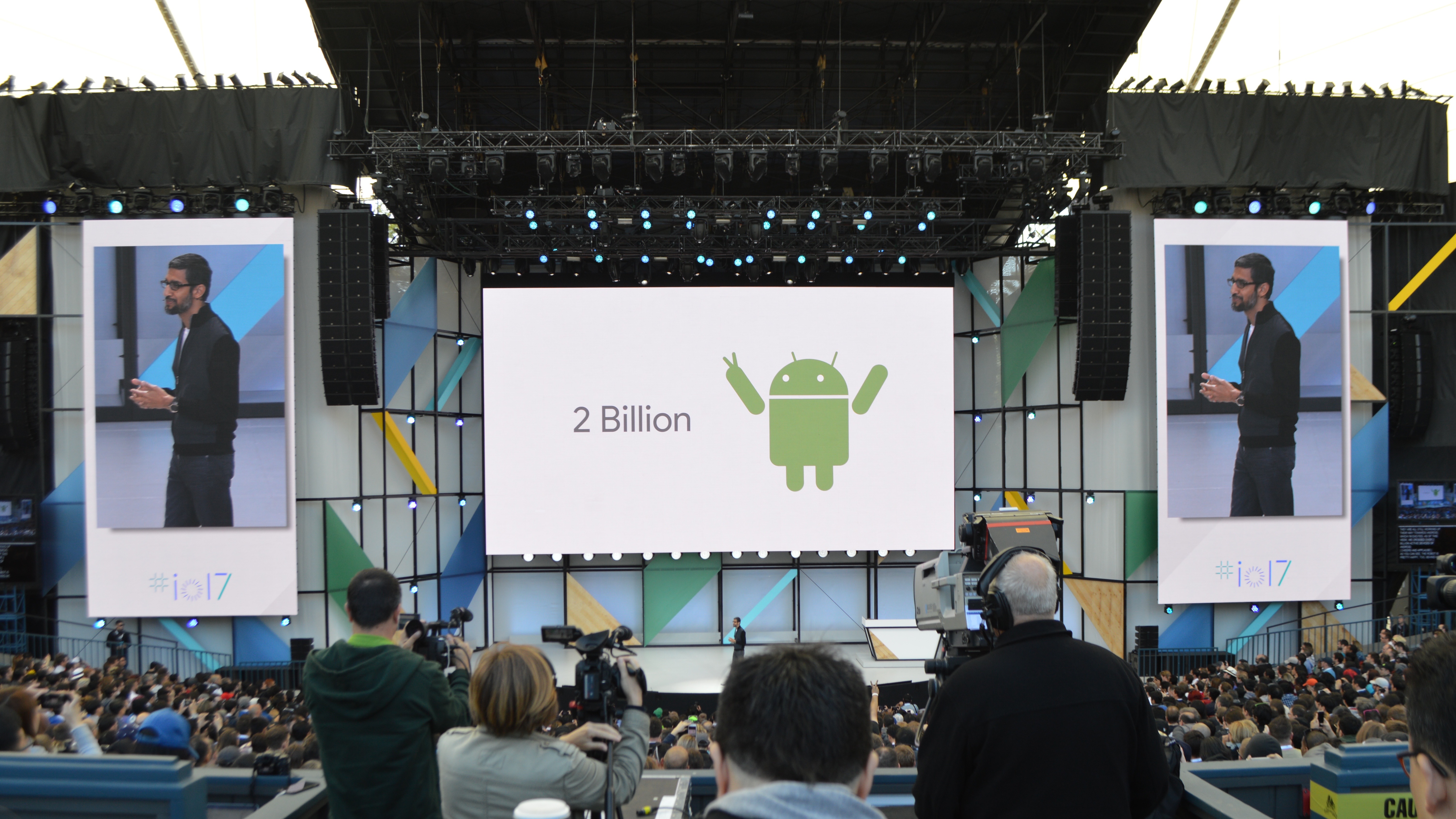
31. Humblebrag: Google wants you to know it’s dominating
Google IO is the company’s chance to express its bragging rights, and it did that at the start of its keynote by telling one and all that Android is now up to 2 billion active users.
What’s more, seven of its products and platforms are up to 1 billion monthly users each (search, Android, Chrome, YouTube, Maps, Play Store and Gmail).
Google Drive may be the next to reach this height. It has 800 million monthly users. There are also over 3 million objects uploaded to the cloud storage service – every single week.
Next on the list Google Photos, with over 500 million users and 1.2 billion uploads every day. Google Assistant, one of the newest platforms, is already at more than 100 million devices.
The more users it has, and the better it scales, the more powerful it can become. That's sounds like it could be a good thing – or very menacing.

32. Never come out of your Daydream VR headset
There’s a lot more minor awesomeness to the Daydream 2.0 Euphrates update. You’ll soon be able to watch YouTube VR in a social environment with shared rooms and live voice chat.
Need to escape your headset to surf the web? Well, soon you’ll be able to stay in VR and use Chrome in a 360-degree virtual environment. I wonder how many tabs you can have open?
Google’s newest rendering technology, Seurat, is bringing high-fidelity scenes to mobile VR, and it even used Star Wars Rogue one to simulate its movie-quality rendering abilities in real-time.
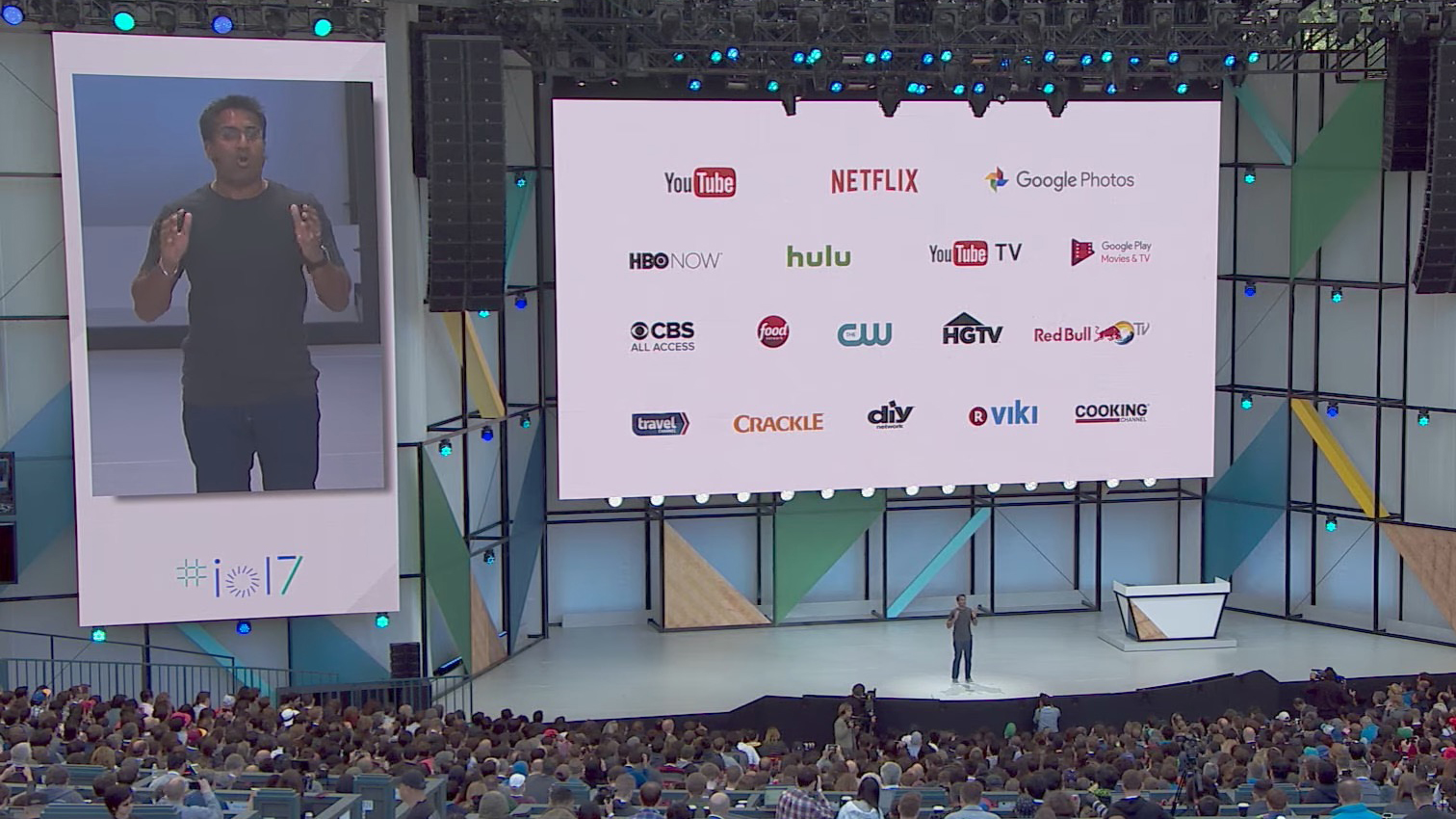
33. Google Home can launch HBO, Hulu, and others with your voice
New video partners are also coming to Google Home, so you can launch streaming content on your television. Previously, it was limited to Netflix, YouTube and Google Photos.
Now you can open HBO Now, Hulus, YouTube TV, Google Play Movies & TV and CBS All Access, among a few less notable others.
It’s almost as if your Chromecast is getting proper voice support if you have both a Chromecast and Google Home in your possession.
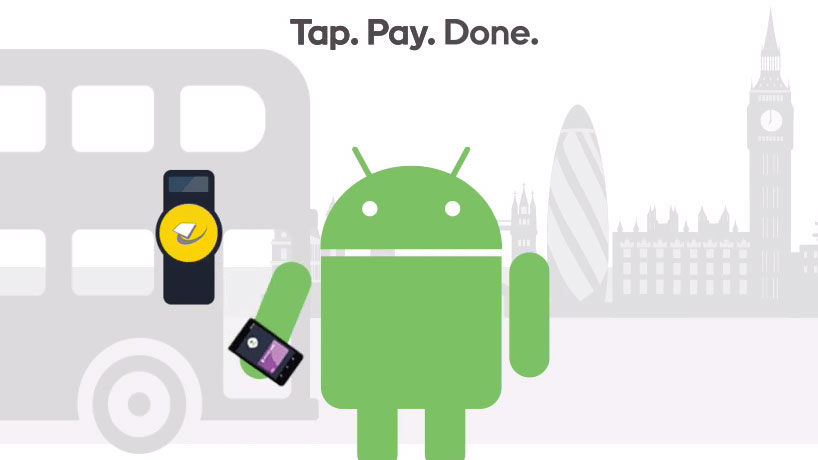
34. Cross-payments on Android Pay, Play, Chrome
Google is further reducing the gap between you and what you want to buy with the addition of payments via Google Assistant and its other cross-platform interfaces.
You can start paying for things through Google Assistant soon, and your order can be tracked, modified and reordered right inside Google’s helper bot. Forgot entering your credit card details.
Furthermore, your credit cards will be linked across all of Google’s ways of paying: Android Pay, Google Play and Chrome. That way, you don’t have to keep entering the same digits.
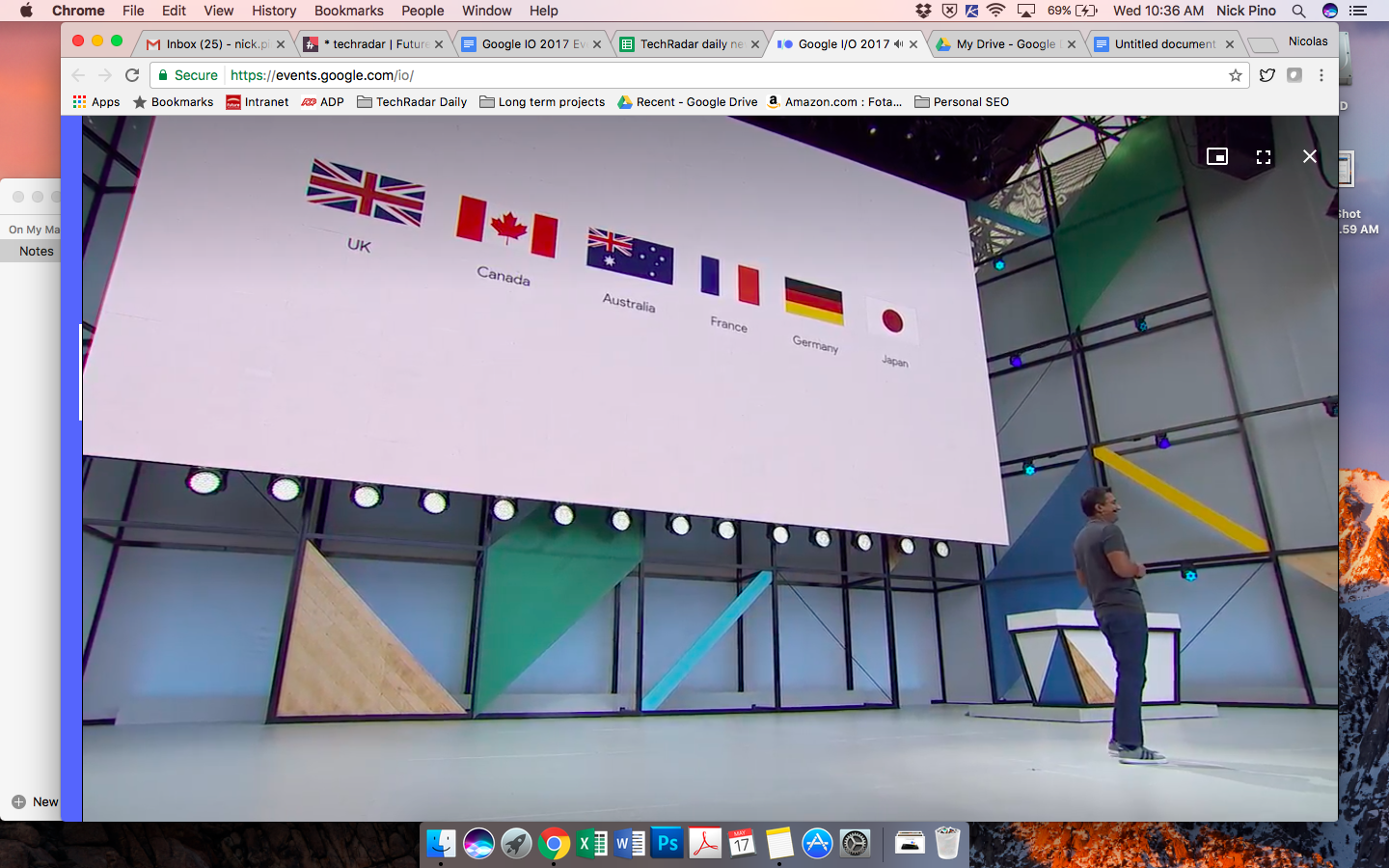
35. Google Home and Google Assistant in new languages and regions
As much as Google Home and Google Assistant were talked about at Google IO, neither are global yet. In other words, their real impact on the world is just getting started.
We’ll see Google Assistant on Android phones Brazilian Portuguese, French, German and Japanese soon, and Italian, Korean and Spanish by the end of the year.
Google Assistant on Google Home is coming to speakers by the end of the year in Australia, Canada, France, Germany and Japan. The more, the merrier.
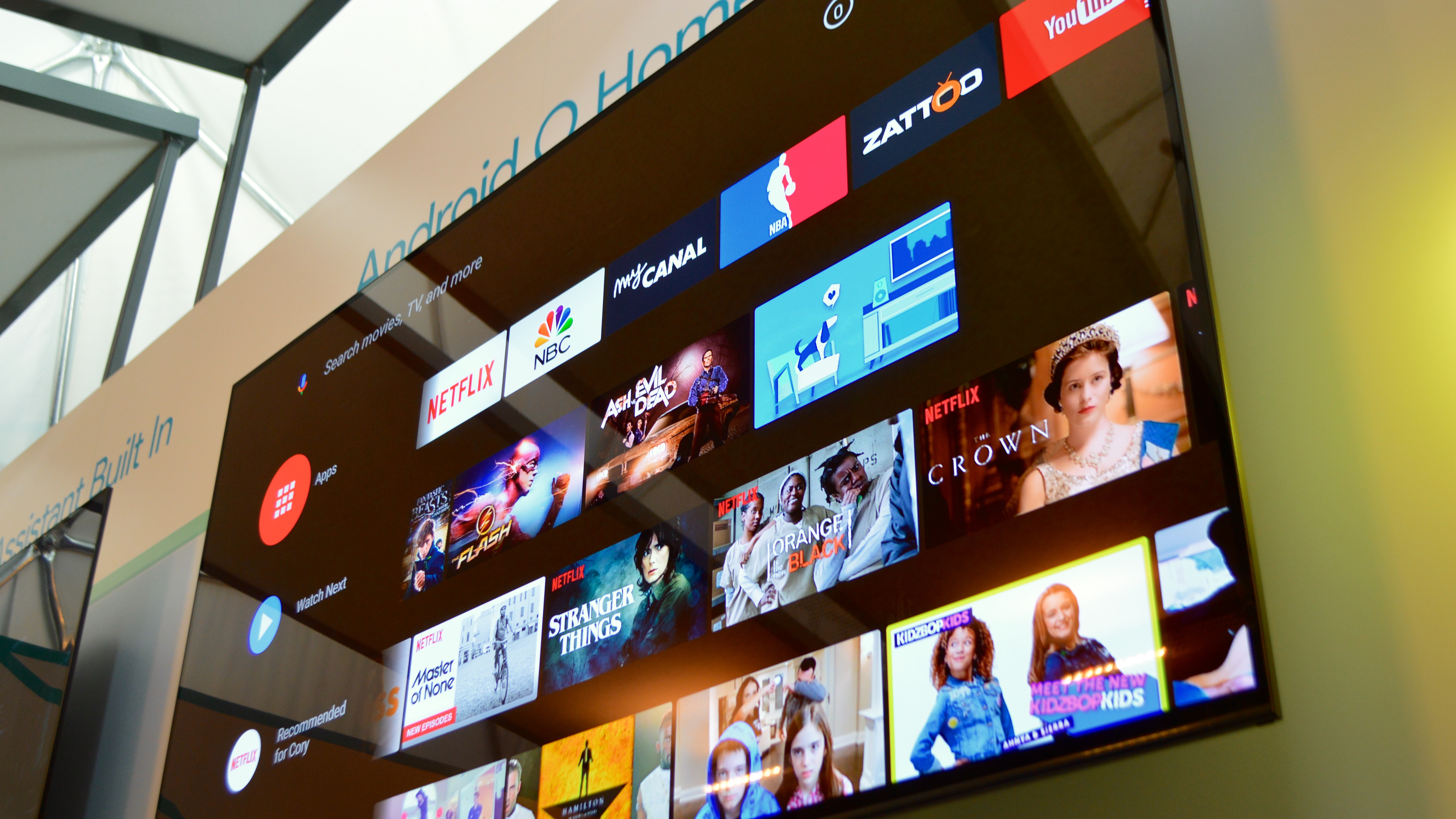
36. Android O home screen
Android O is coming to an Android TV near you very soon, and it’s debuting a brand new home screen. We got a sneak peek at the coming attractions in our Google IO demo.
It re-organizing your video content into rows that closely resemble a TV guide, and often times they’re organized by channel or user. You get to customize how you’d like to display on your TV.
Google Assistant is being baked into the Android O TV experience (but also on prior versions of Android TV), using machine learning to bring up videos, photos and data that you ask for.
Like everything else at Google IO, the company is trying to refine its TV operating system with Assistant’s natural language and provide a better way of display content that matters to you.
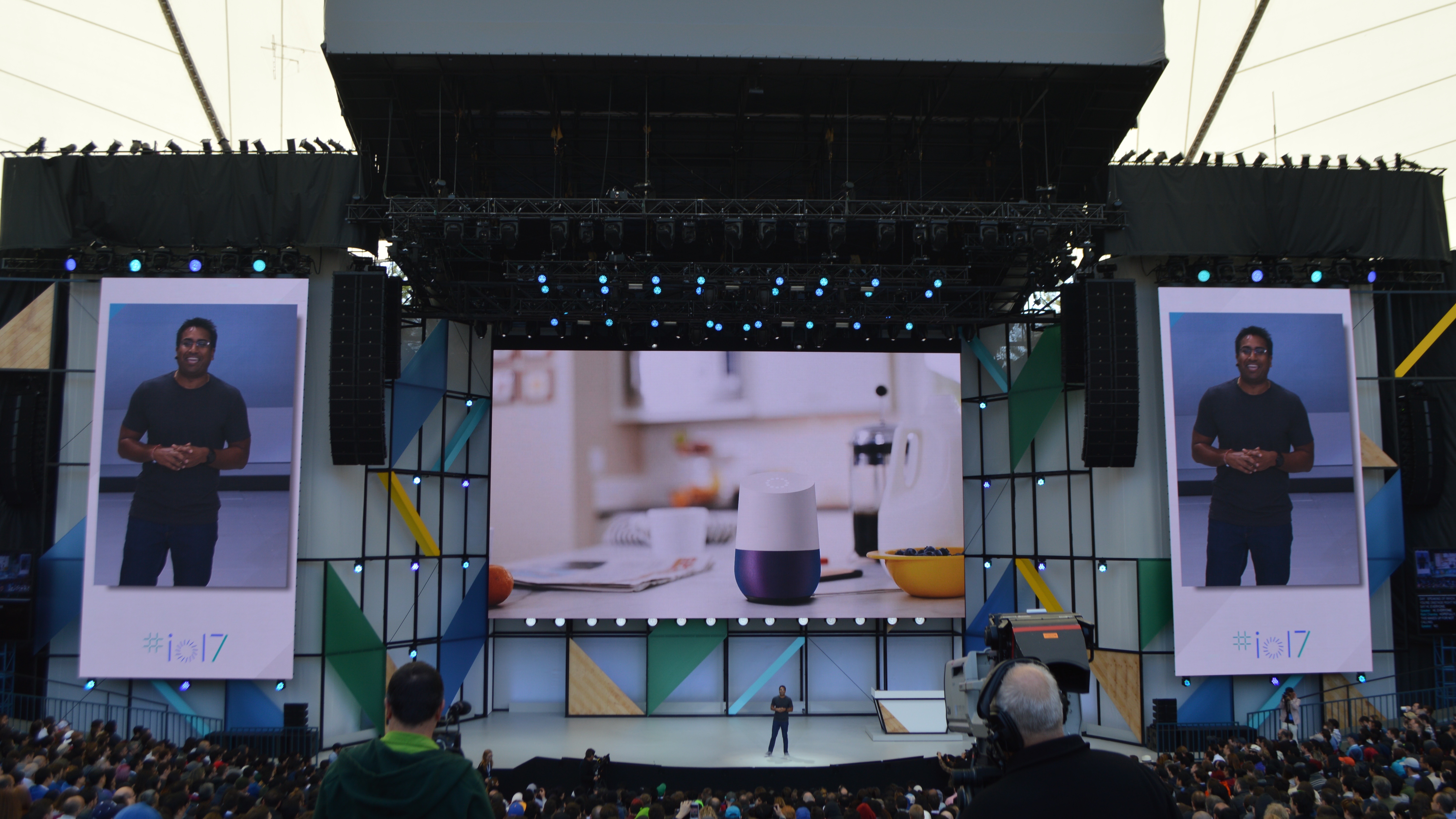
37. User-defined Assistant shortcuts for apps
You can create custom shortcuts in order to speak more naturally when talking to Assistant. The example Google gave had to do with the surf report.
Instead of saying "Ok Google, ask Forecaster Joe what's the surf report for the Outer Banks," you can simplify it to "Ok Google, is the surf up?" Not life changing, but certainly helpful.
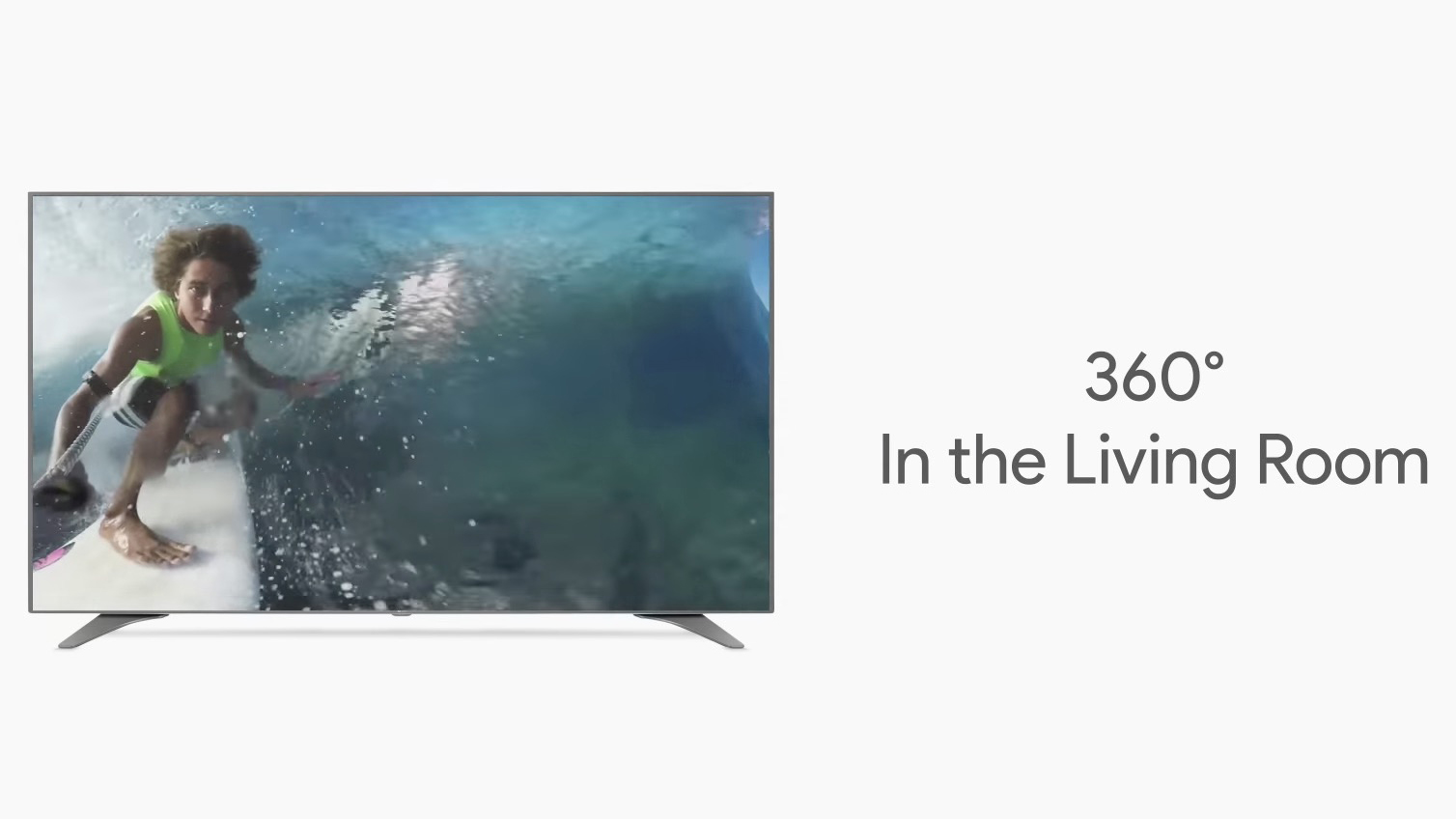
38. 360-degree video on the TV
You’ll soon be able to watch 360-degree videos – including live 360 videos – on your Android TV or an Xbox One console. That said, we're not sure we'll ever try this, as neat as it could be on the big screen.
It’s an idea that has potential on paper: maximizing the 360-degree effect on screens that are ten times bigger than our smartphones. But will we ever use it? Doubtful.
